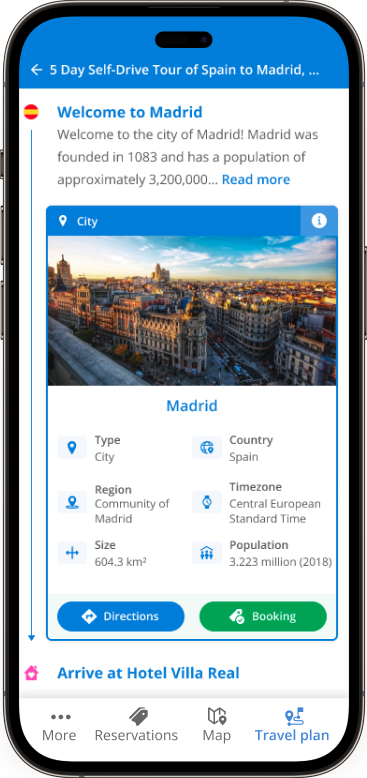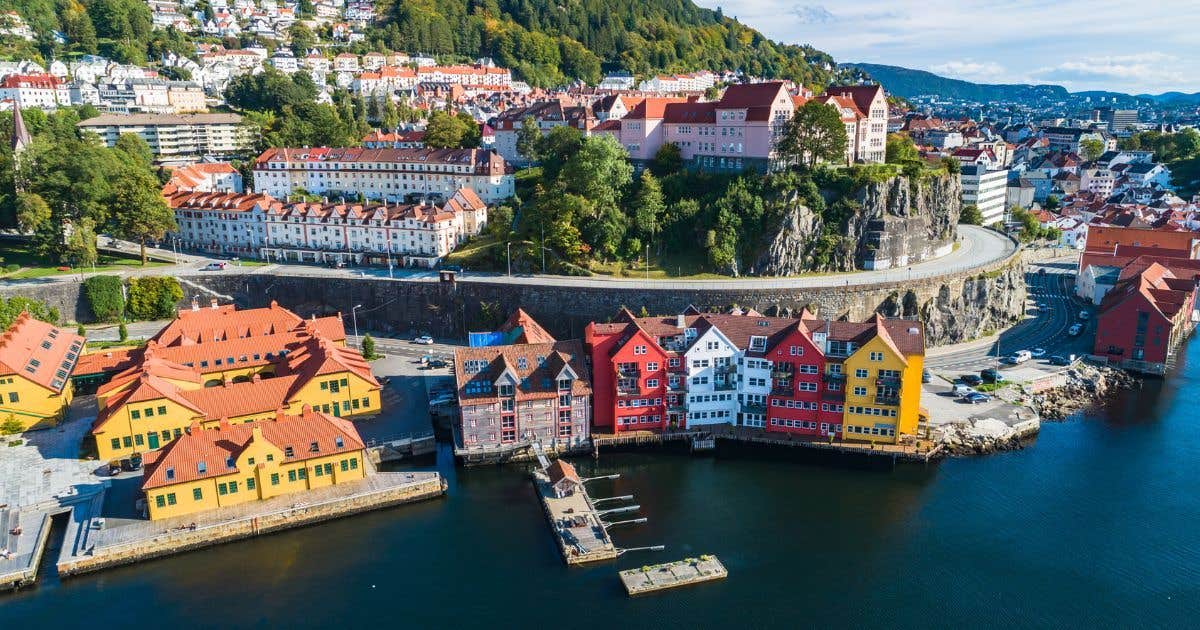
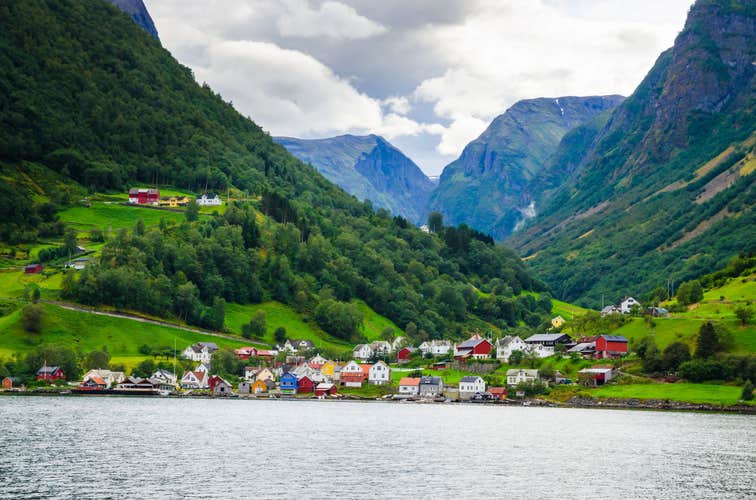
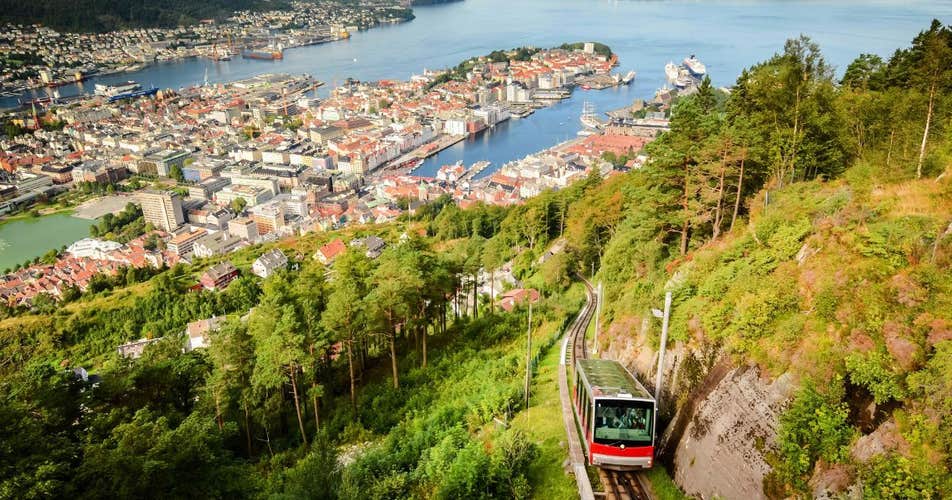
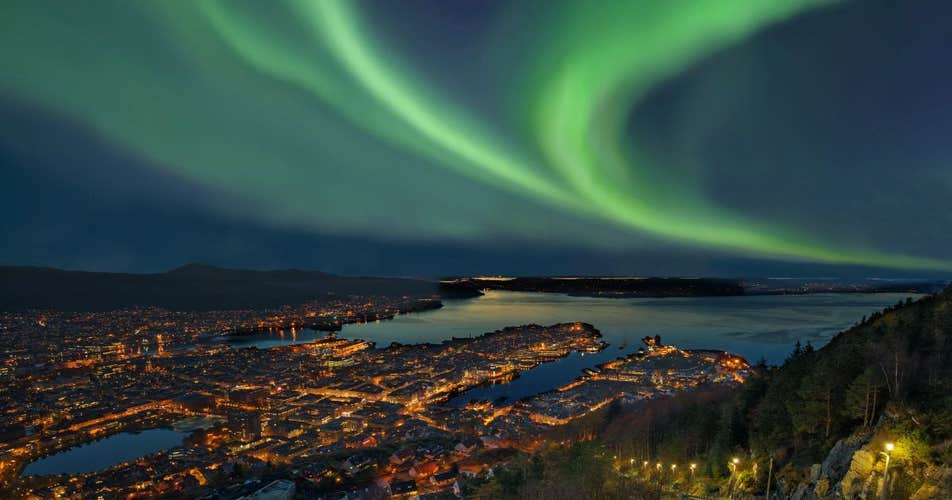
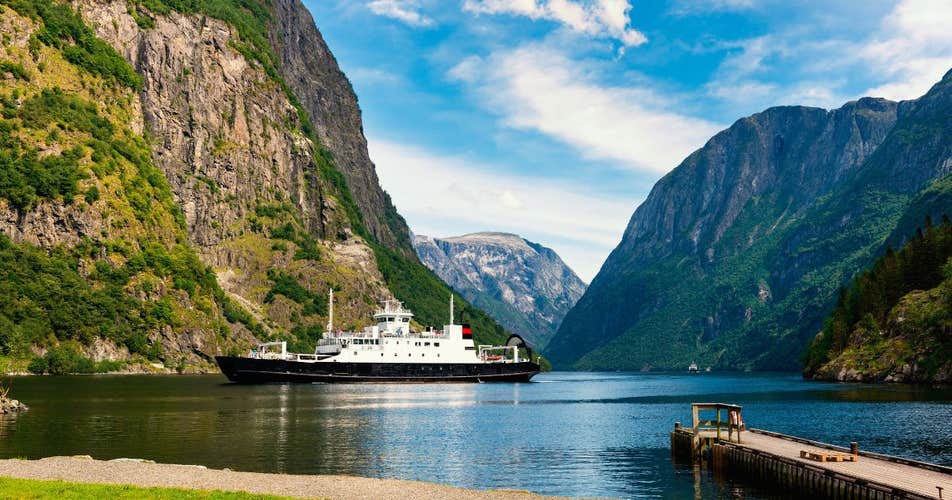
Discover the best time to visit Bergen, often called the "Gateway to the Fjords." Nestled between seven majestic mountains and surrounded by breathtaking fjords. Bergen captivates travelers with its postcard-perfect scenery and rich cultural heritage.
From the world-famous Flam Railway to the historic Bryggen Wharf, Bergen offers unforgettable experiences at every turn. However, choosing the ideal time to visit Bergen is key to making the most of your trip.
This guide will help you decide when to explore Bergen, with insights into seasonal weather and travel tips. Whether you're seeking nature-filled adventures or cultural delights, there are always exciting things to do in Bergen.
To make your trip hassle-free, explore a variety of travel packages in Bergen tailored to all budgets. Uncover Norway's spectacular landscapes at your own pace with convenient car rentals in Bergen. Read on to find out when to visit Bergen for an unforgettable adventure!
Bergen Weather
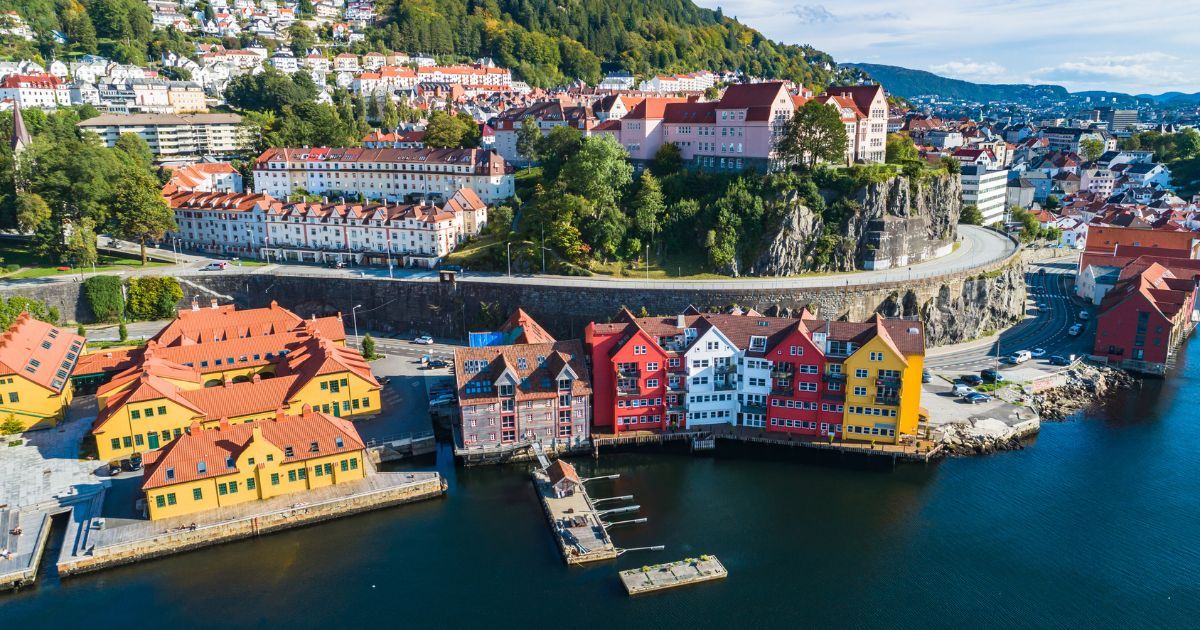
Bergen is between two of Norway's largest fjords, Hardangerfjord and Sognefjord. Both fjords lie near the coast, affecting the city's weather patterns. The warm ocean current from the Gulf Stream keeps Bergen's weather milder than you might expect for its northern latitude.
However, this coastal location also brings plenty of moisture. When westerly winds sweep across the city, they are forced to rise over the surrounding mountains, causing the moisture to condense into rain. This natural phenomenon is why Bergen is the rainiest city in Europe.
Even though rain is common in Bergen, it remains popular due to its closeness to the world-famous fjords. Norwegians also say, "There's no bad weather, only bad clothing," so if you bring a rain jacket and good waterproof shoes, the rain will not stop you from exploring. Its quaint streets and colorful houses make Bergen an incredible place to visit, rain or shine!
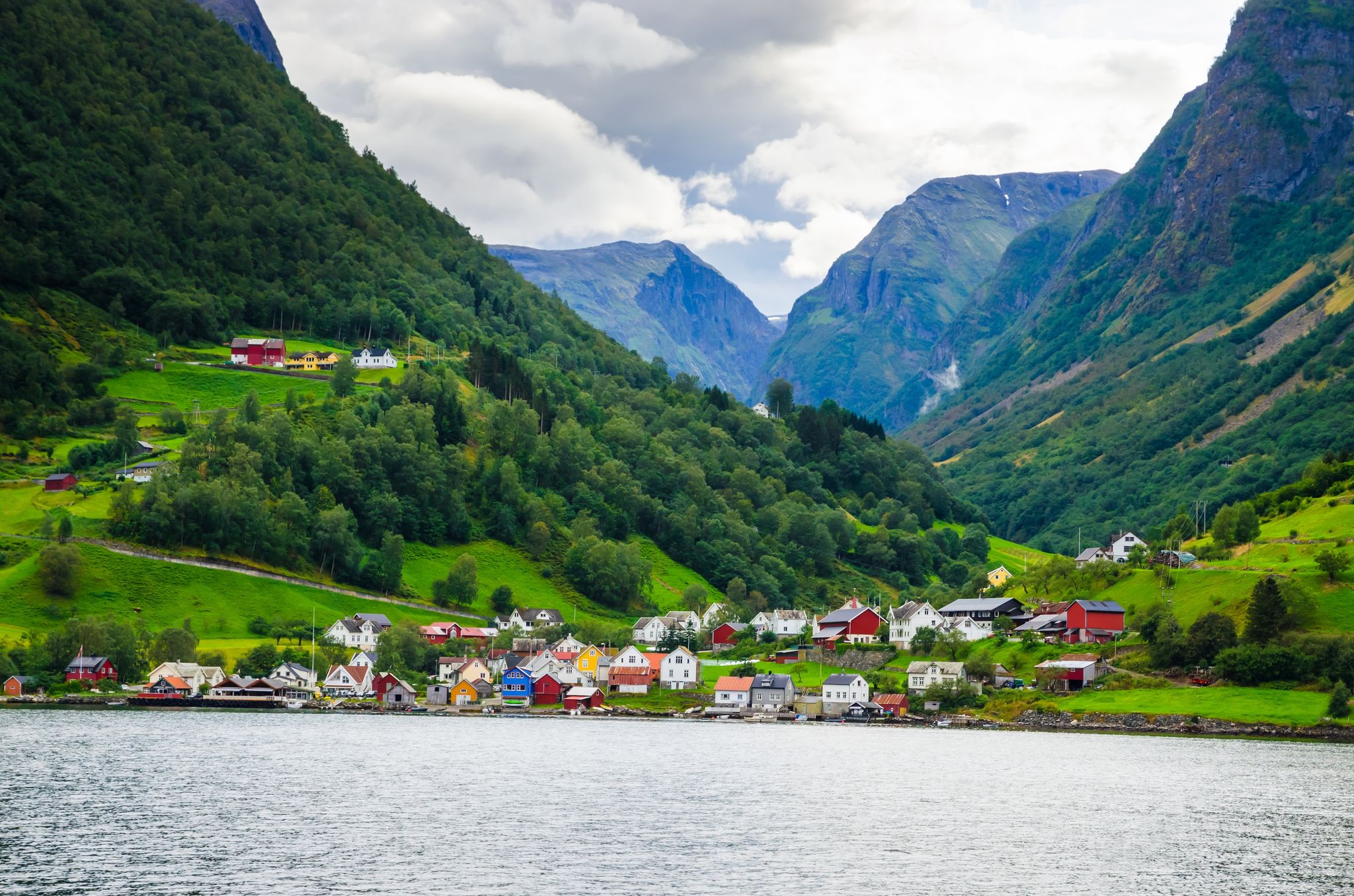
When Is the Best Time To Visit Bergen?
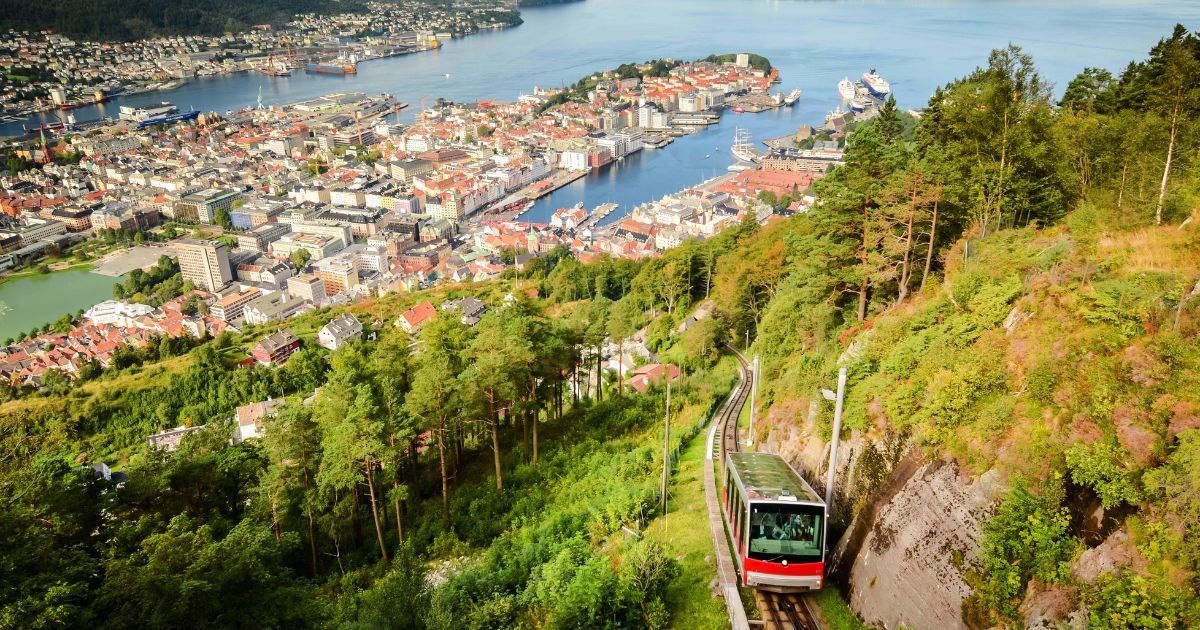
The best time to visit Bergen is from May to August, with the warmest weather, ranging from 59 F - 66 F (15 C to 19 C). The daylight can extend up to 19 hours, so there's plenty of time for outdoor activities.
You can take fjord cruises or hiking in Bergen. Additionally, the city hosts exciting events from May to June, such as the Bergen International Festival and Bergenfest. However, you should be prepared for higher prices and more visitors.
For a quieter experience, consider visiting during the shoulder seasons of April to May or September to October, when Bergen's accommodations are cheaper. While the weather can be unpredictable, you'll encounter fewer crowds and might still enjoy some sunny days.
If you're drawn to Bergen's winter charm, visit between December and February. The city's cozy cafes, festive Christmas markets, and snow-capped mountains are beautiful. On clear nights, you might even see the Northern Lights. While snow is common, you can enjoy winter activities like snowshoe hiking in the nearby mountains.
Best Time To See Northern Lights in Bergen
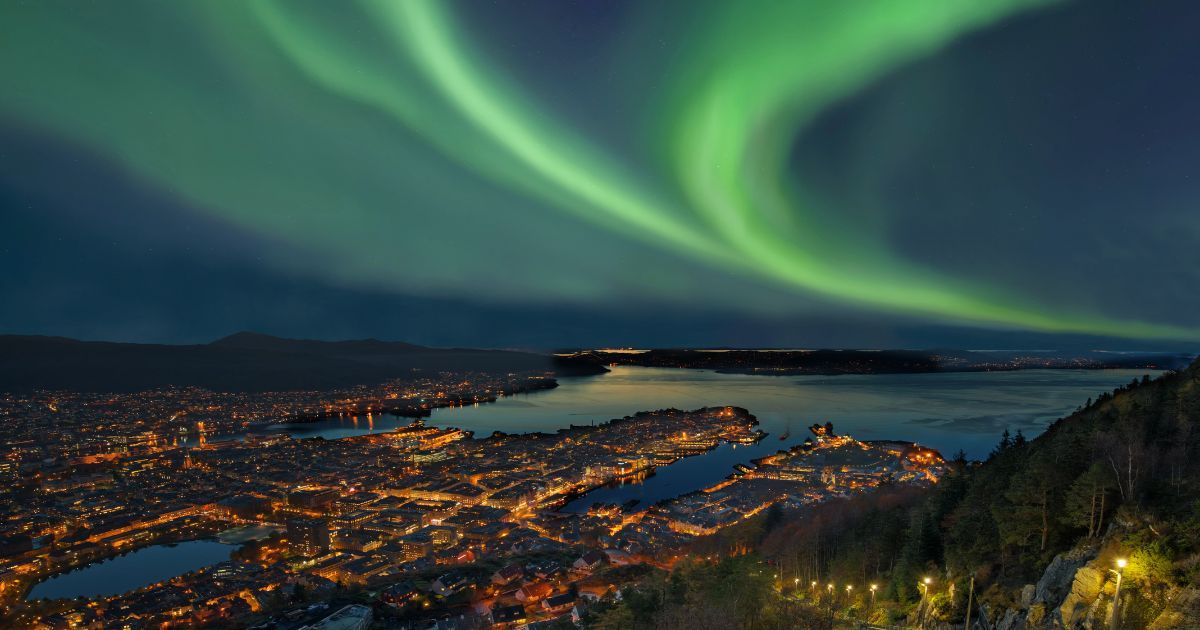
While you can witness the northern lights in Bergen, they are less common than in northern Norway. To increase your chances, visit when the nights are the longest between late September and March. The best time to look is from 22:00 to 2:00 on clear nights with dark skies.
For a better view, head to spots outside the city lights, likeKvarven Fort or Nordnes Park. Find a quiet, dark place, give your eyes time to adjust, and look north. With patience, you might catch a glimpse of this beautiful natural wonder!
Best Time To Visit Bergen Fjords
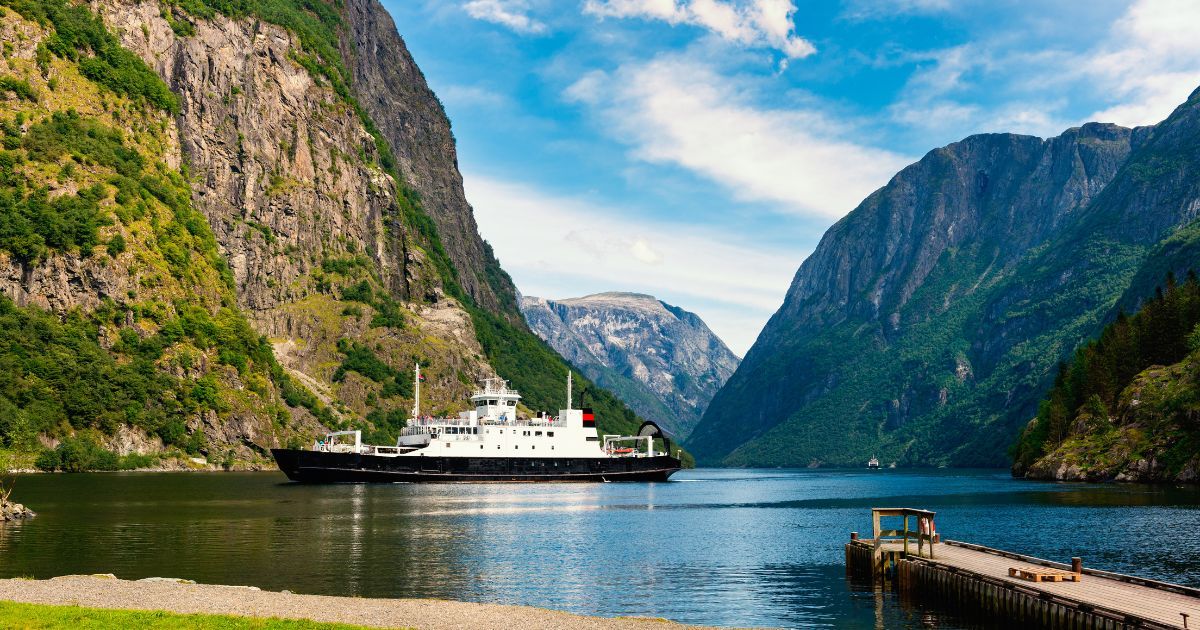
You can visit the Bergen fjords any time of the year, but more tour options are available in summer from June to August. If you like to avoid large crowds, you can visit the fjords during the winter from December to February. A day trip to Sognefjord or Hardangerfjord is a must for wonderful views.
If you are in a short time, the nearer fjords like Hardangerfjord also give pretty views, though the mountains are low. Many beautiful fjords, like Byfjorden, can also be seen from the city harbor; however, the most impressive ones can be found further away. On this one-day cruise from Bergen, you can see Aurlandsfjord and Naeroyfjord with their full dramatic landscapes.
Best Time To Visit Bergen for Photography
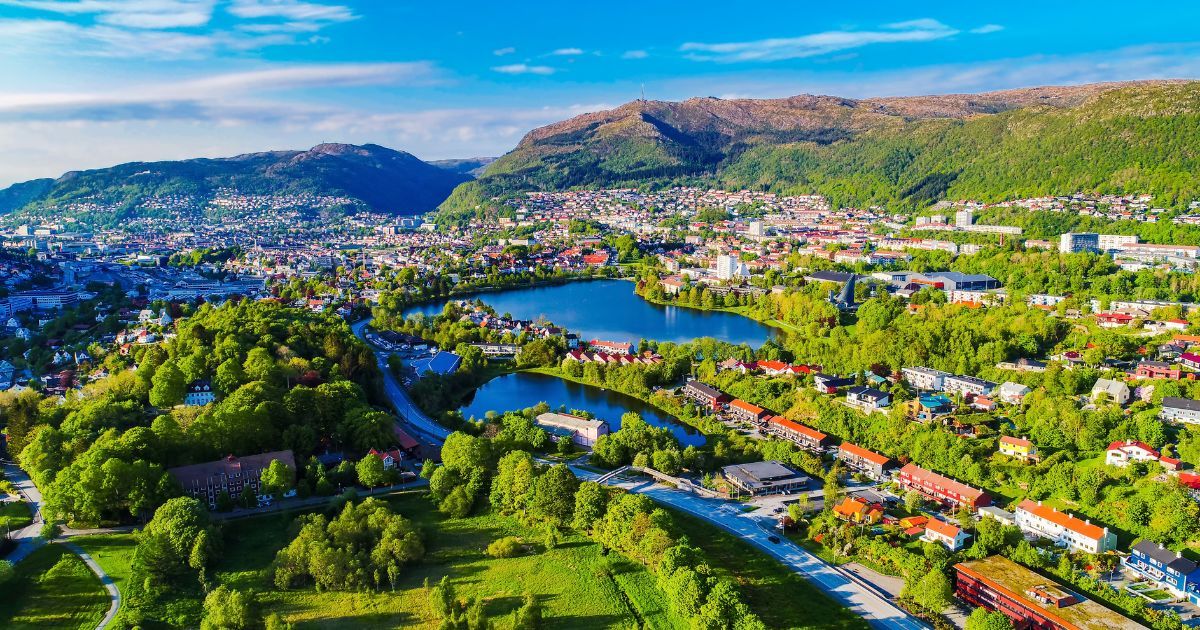
Bergen offers breathtaking photography options with its UNESCO-listed harbor district, beautiful mountains, and fjords. The Floibanen Funicular provides breathtaking elevated shots above the city. A guided tour by Minibus in Bergen includes photo stops at key spots. Capture the iconic Bryggen Wharf, which has historic wooden buildings.
For colorful outdoor photography, summer (June to August) has long days, and you can utilize natural light to take scenic shots at Mount Ulriken or along the Byfjorden. If you prefer dramatic scenery, September to October transforms the surroundings with orange, red, and yellow fall colors, especially around the Hardangerfjord and Sognefjord.
In winter (November to February), Bergen’s shorter days bring moody lighting, ideal for capturing snow-covered Lovstakken or the festive streets of Torgallmenningen. With fewer crowds, it’s also the best time to visit Bergen for atmospheric shots of Nordnes Park and possibly the northern lights if you're lucky.
Best Season To Visit Bergen
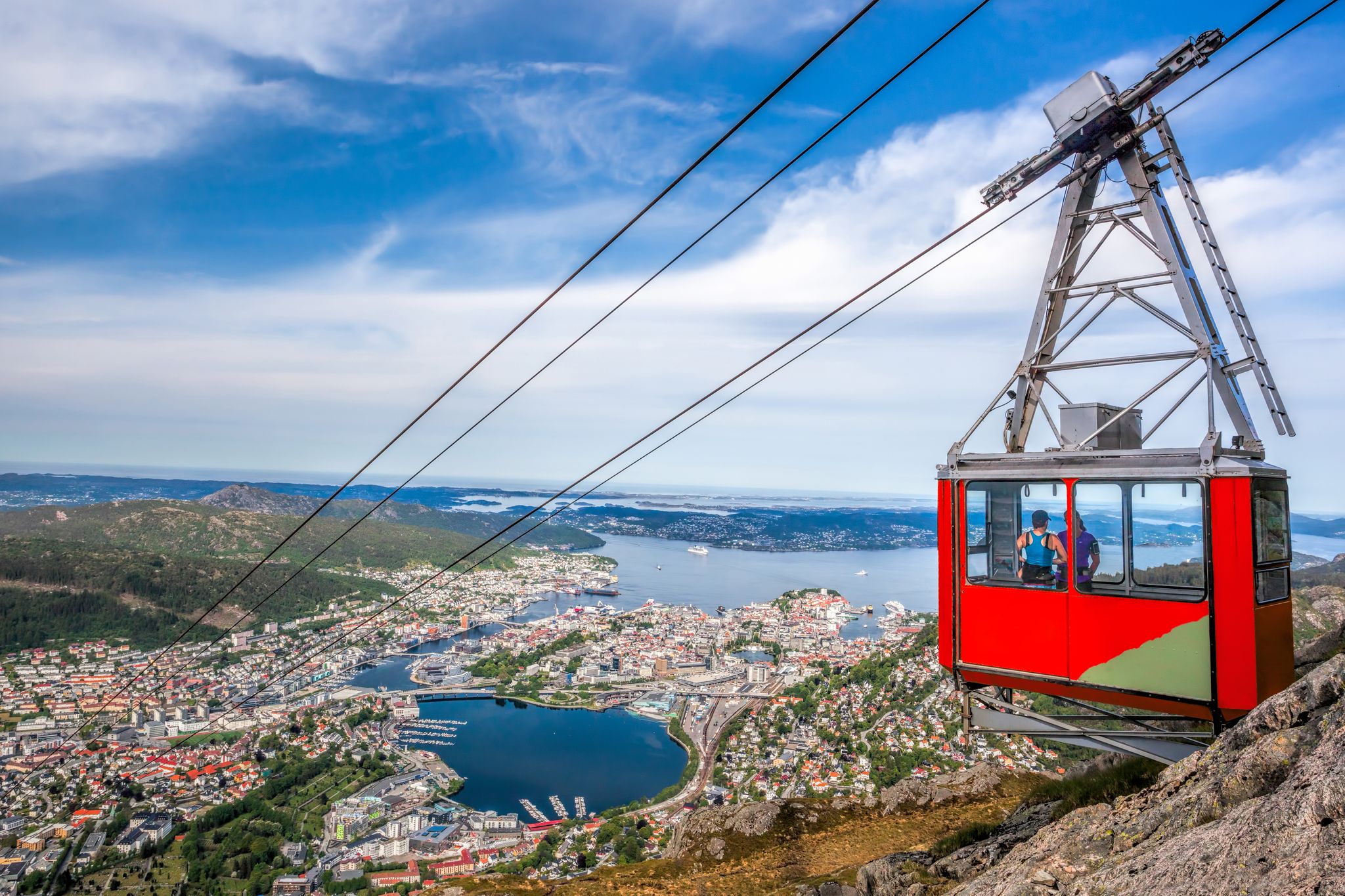
Let's take a closer look at the season-by-season breakdown to determine the best time to visit Bergen. Keep reading to see what to expect and plan your itinerary in Bergen.
Visiting Bergen in Spring (March to May)
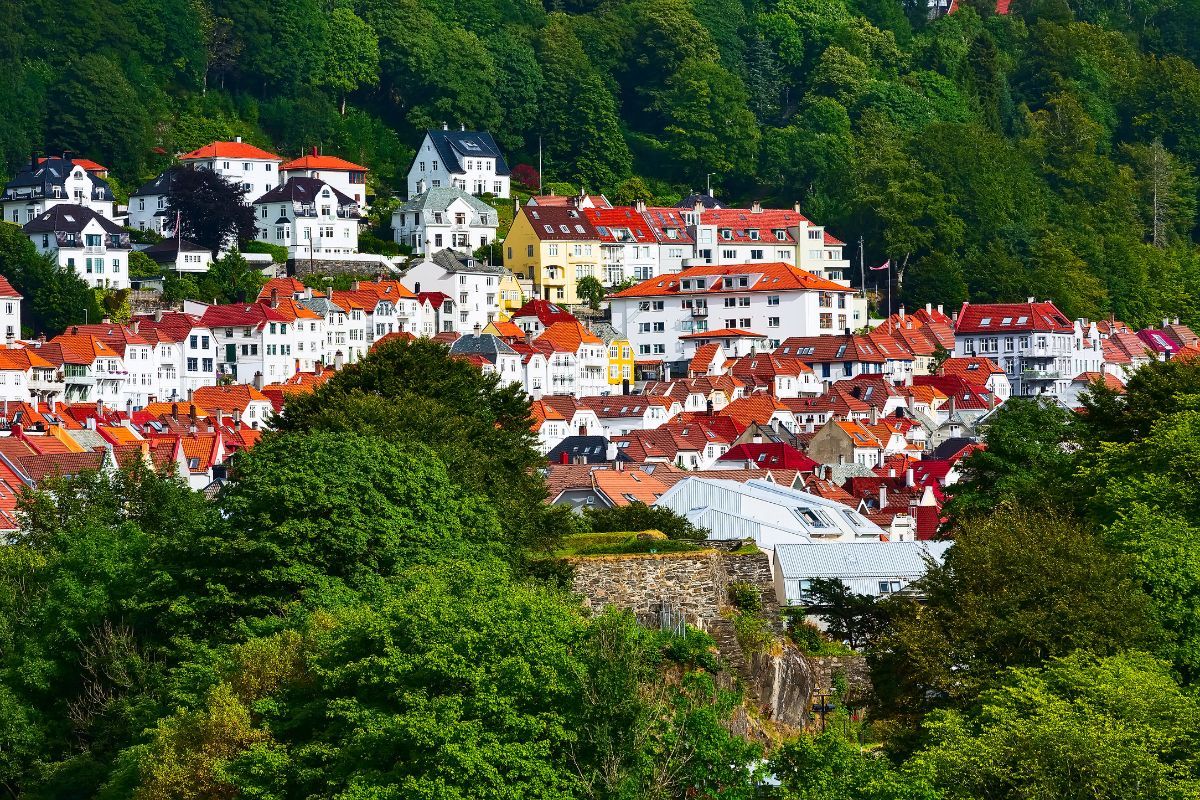
Spring is warm and has more sunshine than winter. During the day, temperatures sometimes rise as high as 59 F (15 C), while at night, they cool to around 42 F (6 C). Spring rainfall is between 3 inches (80 millimeters) and 6 inches (140 millimeters), so be prepared for occasional showers. However, accommodations are more affordable in spring and are ideal for visitors on a tight budget.
Things To Do When Visiting Bergen During Spring
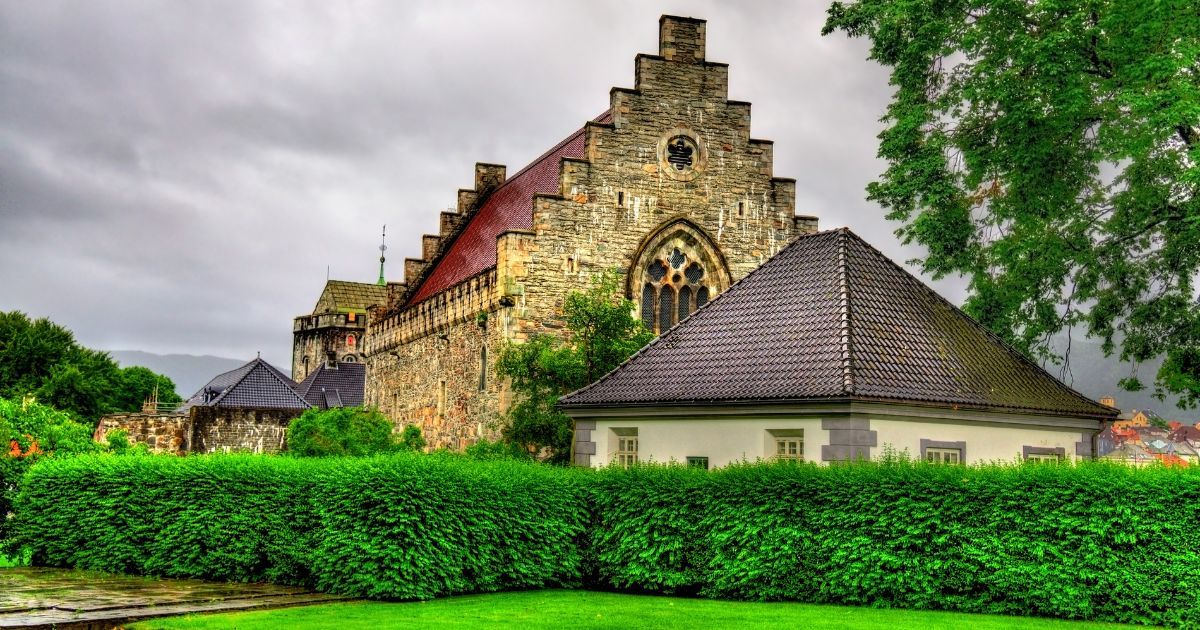
Spring is the best time to visit Bergen for those who want a quieter city breaks. Popular tourist attractions like the UNESCO-listed Bryggen Wharf and the Floibanen Funicular are less busy. Spring is a pleasant season to hike on top of Mount Floyen. The trails won't be crowded compared to the busy summer months.
The cooler air improves the visibility of the city views. You can also do the hop-on hop-off bus tour to explore Bergen attractions like Bergenhus Fortress and Fantoft Stave Chuch at your own pace. Fewer visitors mean more serenity during your trip.
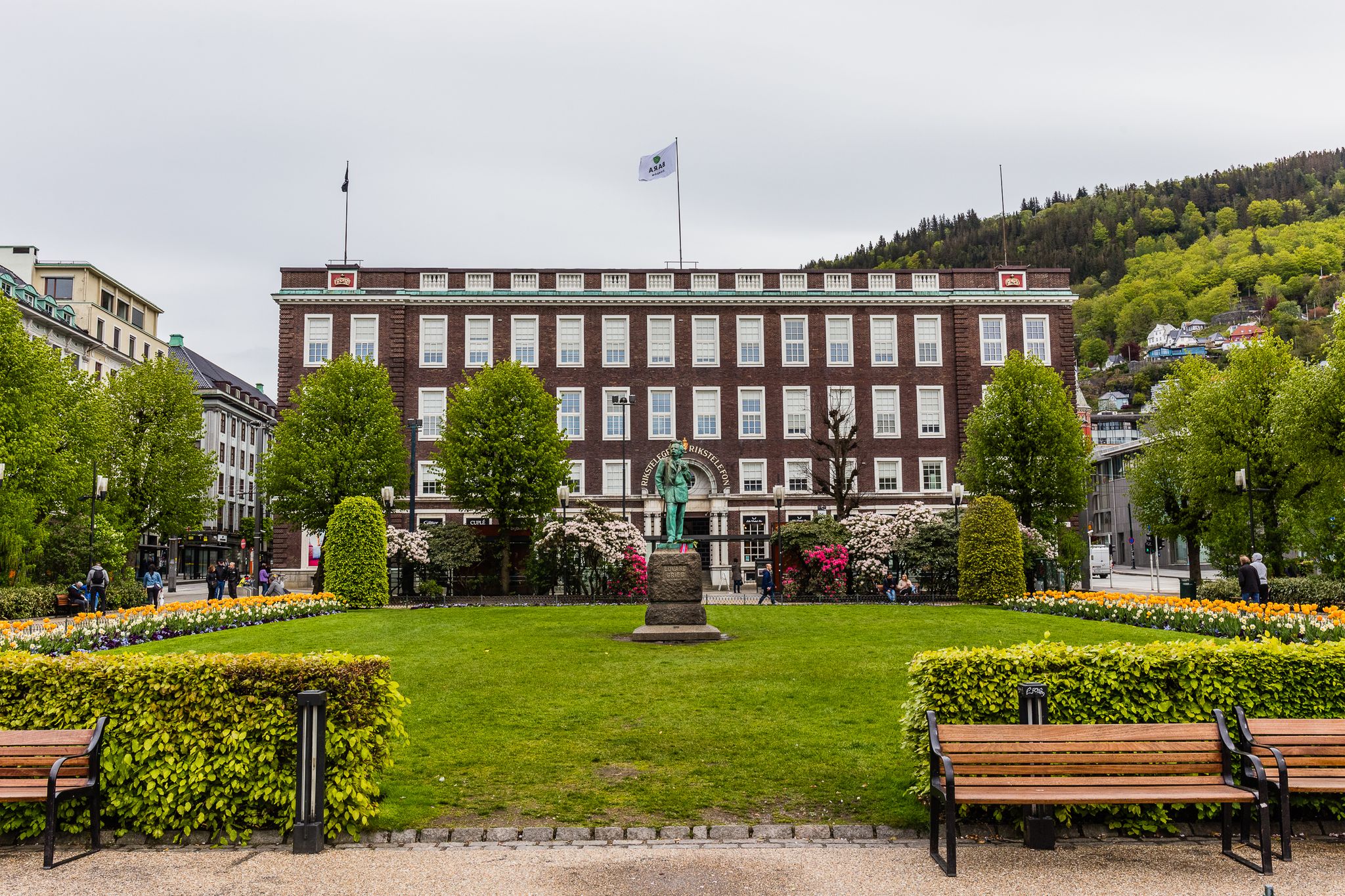
Events When Visiting Bergen During Spring
Spring is the best time to travel to Bergen for a few exciting events. In the first half of March, the Borealis Festival takes place. It is a primary festival of experimental music with performers and audiences worldwide. In May, Bergen also celebrates several important events, such as Veterans' Day and Women's Historical Night.
One of the big events in Bergen is Constitution Day, which is celebrated with a big parade on May 17. Later in May, the Night Jazz Festival features concerts and performances that showcase contemporary jazz. As spring ends, Bergen hosts the prestigious Bergen International Festival. This festival highlights a diverse range of musical, folklore, and dance performances.
Visiting Bergen in the Summer (June to August)
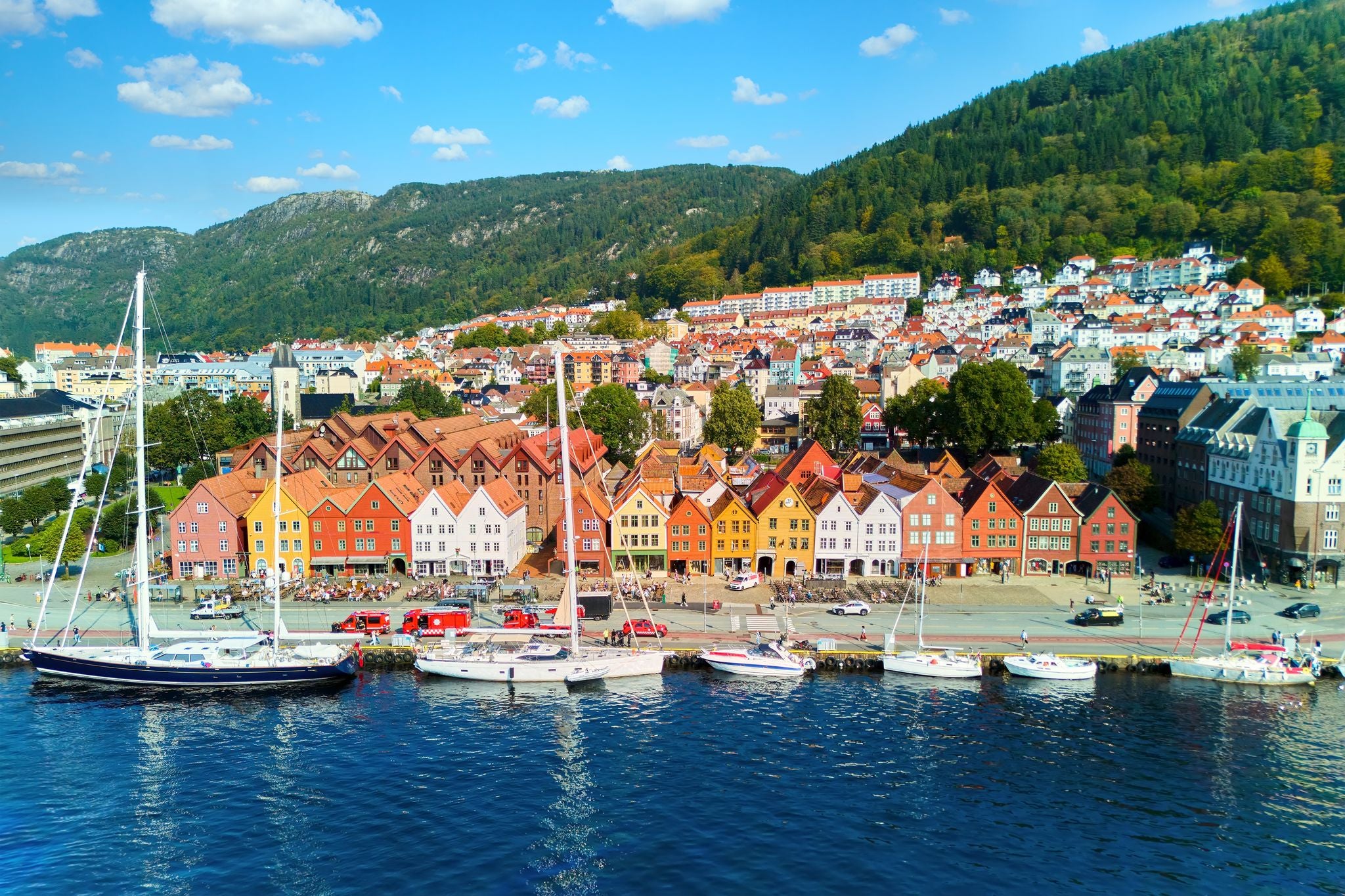
In summer, Bergen's temperatures average around 61 F (16 C), with lows around 49 F (9 C). With 19 more daylight hours, summer is one of the best times to visit Bergen, allowing for extended exploration.
The longer days give you plenty of time to explore the beautiful fjords or stroll through vibrant neighborhoods like Bryggen. Rain is a typical but gentle shower, so it's still an excellent time to explore. Summer also brings milder weather, which is ideal for outdoor activities and al fresco dining along the waterfront.
Things To Do When Visiting Bergen During Summer
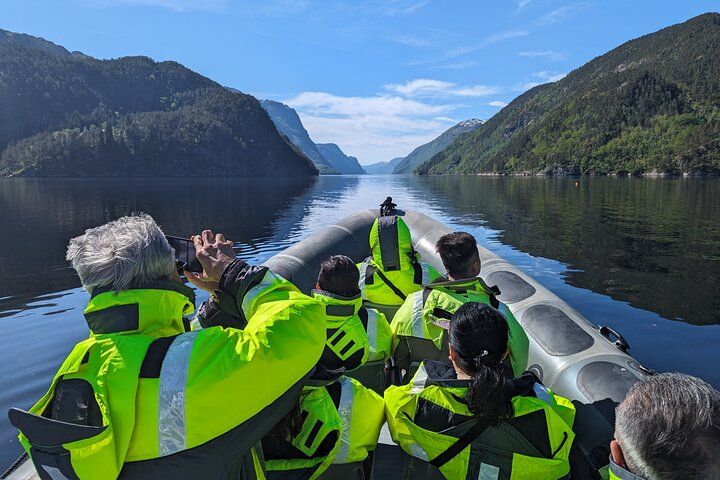
Bergen is an excellent destination for nature and outdoor adventures in summer. One activity you should try is a thrilling boat tour in Bergen to see the Hesjedalsfossen twin waterfalls. Another fun experience is guided kayaking in Oygarden islets, which ic suitable even for eight-year-old children.
Meanwhile, this Hardangerfjord tour will show impressive close-up views of its spectacular waterfalls. Adventure seekers should try a mountain bike tour in Voss. Also, consider taking a guided fjord and glacier tour from Bergen to learn how the vast and ancient ice formations shaped the granite landscape around you.
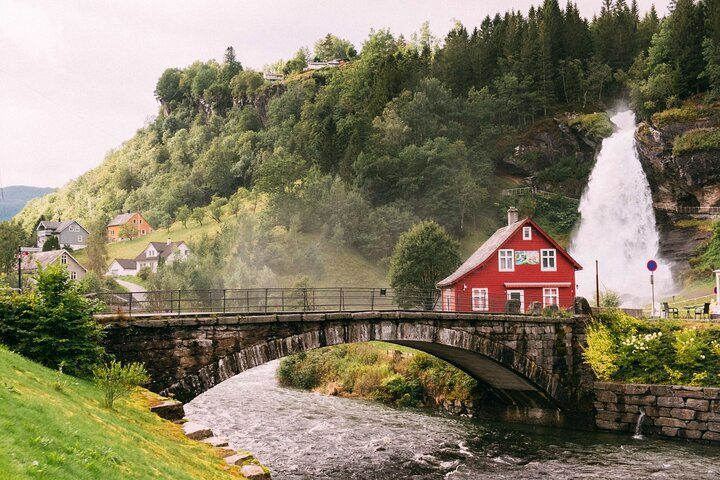
Events When Visiting Bergen During Summer
Summer is the best time to visit Bergen for festivals and live music. One of the highlights is Bergenfest in June, a four-day outdoor music event at Bergenhus Fortress. International and Norwegian artists perform there. Listening to live music in the lovely summer weather is a fantastic way to enjoy the season.
Another noted event is Beyond the Gates, an extreme metal festival held every August at the USF Verftet, a former sardine factory. The Eggstock Music Competition is held in the first week of June, where artists play live in front of an audience.
The Feelings Festival in late August is a must-attend for pop, electronic, and hip-hop lovers. It presents energetic performances that will let you dance with the crowd.
Tips for Visiting Bergen During Summer
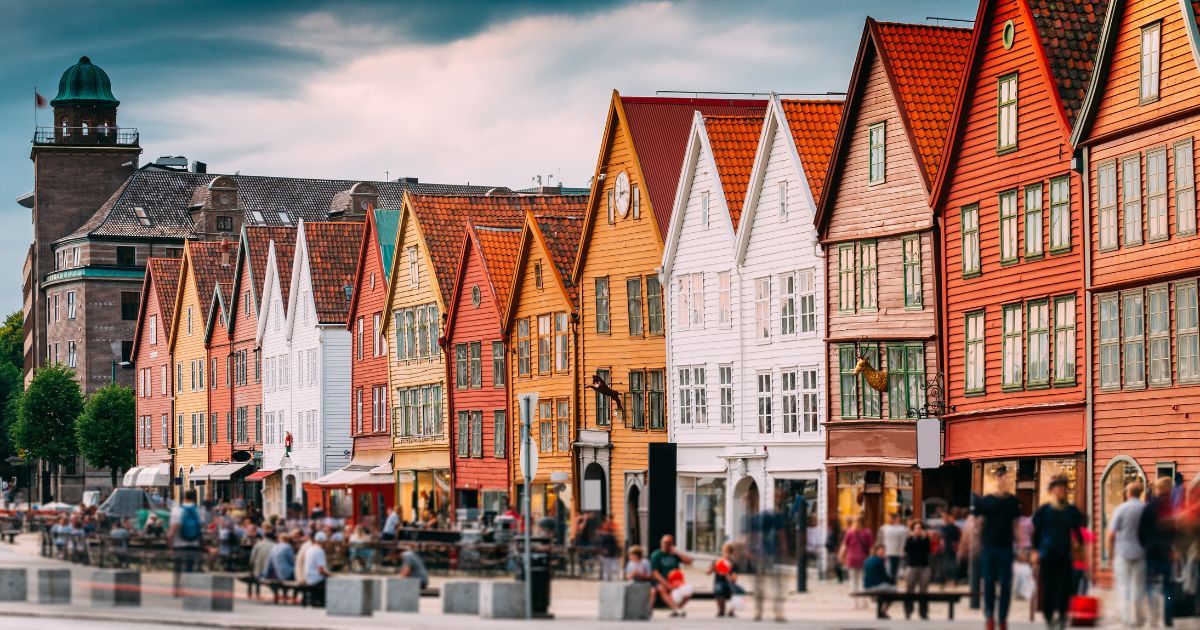
Summer is the peak tourist season, with many visitors arriving by cruise ships and trains. Expect crowded areas near the main cruise terminal, such as Bryggen Wharf and the Floibanen Funicular.
- Plan Around Crowds: Explore popular attractions early in the morning or on weekdays to avoid large crowds.
- Book in Advance: Secure tickets for attractions at least a month in advance, as spots fill up quickly during the busy season. Accommodation prices increase in summer, so book your stay early to lock in better deals.
- Prepare for Transportation: Arrange transport services in Bergen in advance, including bus or train tickets, as they can become very crowded, especially on weekends. Consider renting a car to explore Bergen and its surroundings at your own pace.
Visiting Bergen in Autumn (September to November)
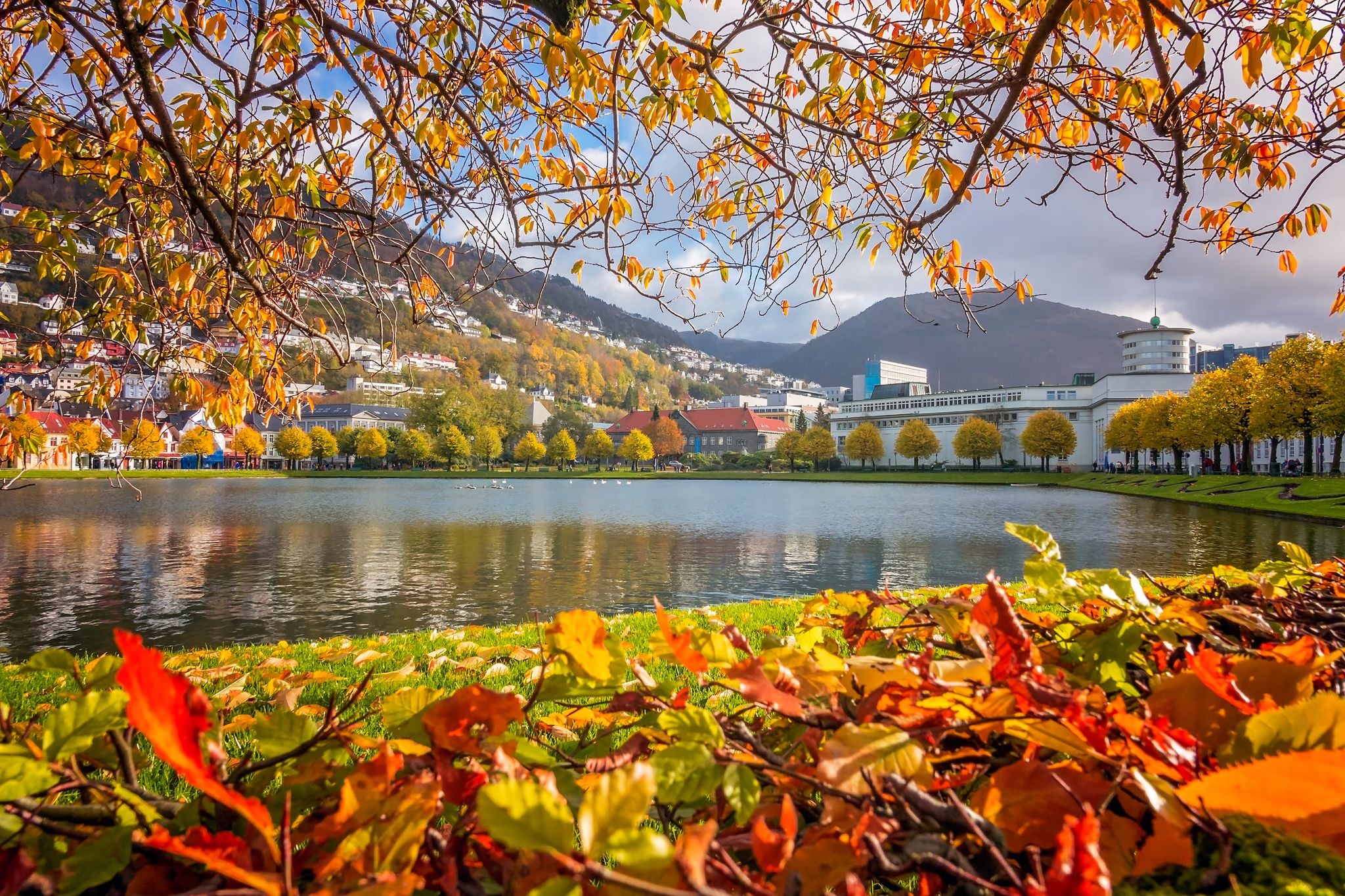
As summer ends, the weather in Bergen cools from 57 F (14 C) to 45 F (7 C). There are only a few sunny weeks in autumn. To enjoy outdoor activities, be ready for frequent rain and occasional windy days and wear waterproof clothing and layers.
Things To Do When Visiting Bergen During Autumn
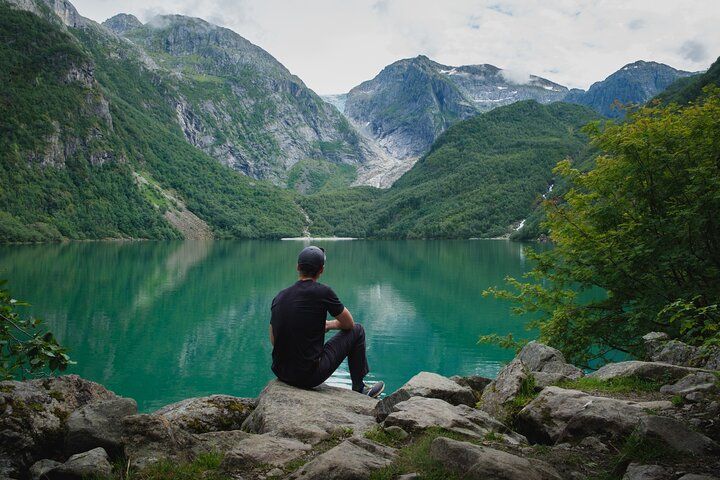
Autumn in Bergen offers many activities that will make your trip unforgettable. For those who want an exciting experience, a half-day fishing tour is a great way to spend a crisp fall morning. If you're after the views, autumn is the ideal time for a guided fjord trip from Bergen. Autumn's hues reflect on the still waters, creating postcard-worthy moments.
For thrill-seekers, go on a day tour to Folgefonna National Park and see the stunning glacier lake. Try the Mostraumen Fjord Cruise to witness dramatic fjords and waterfalls while enjoying the mountain scenery. Bergen's autumn season offers peaceful nature and exciting activities.
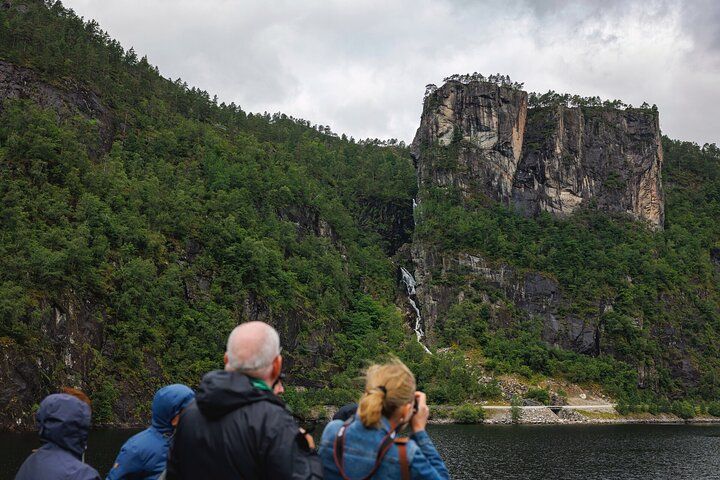
Events When Visiting Bergen During Autumn
Autumn is the best time to visit Bergen for festive events. One is the Festival of Lights in November, which marks the beginning of the Christmas season. Crowds gather in the city center to see the Christmas tree lighting. Festive music and lively entertainment add to the joyful atmosphere.
Another must-see event is the opening of the Gingerbread City (Pepperkakebyen) in November. Located in the city center, this miniature town, made entirely of gingerbread, includes tiny houses, trains, and ships. It’s a fun way to admire the city's creativity and celebrate the start of the holiday season.
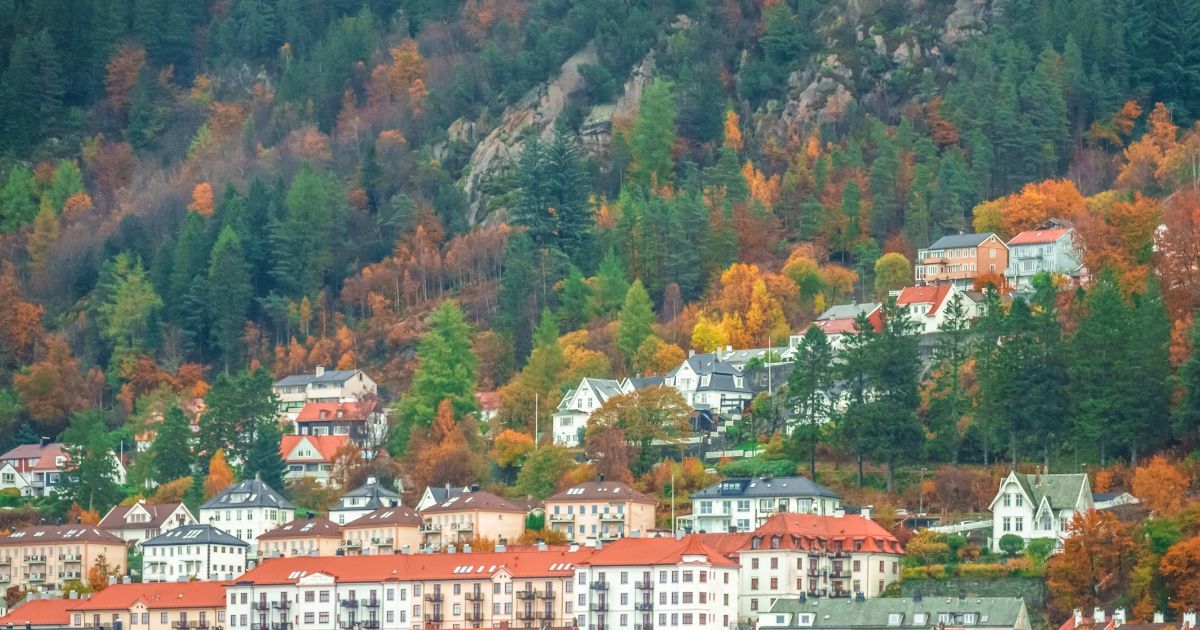
Tips for Visiting Bergen in Autumn
Autumn in Bergen is a season of fiery foliage that paints the mountains and parks like Mount Floyen and Nordnes Park. Despite the rain, Bergen's quiet streets of Bryggen Wharf and nearby fjords provide a peaceful charm for crowd-free exploration.
- Take Advantage of Lower Prices: Autumn is considered a shoulder season, so hotels and attractions in Bergen, including the Floibanen Funicular and museums, are often more affordable. This is a great time to save money for local shopping at Torget Fish Market or enjoying a cozy dinner at local restaurants.
- Be Prepared for Rain: Rain in Bergen is common but often comes and goes. To stay comfortable, always carry rain gear. You can still explore Bryggen Wharf and the Bergenhus Fortress.
- Dress in Layers: With temperatures fluctuating from chilly mornings to milder afternoons, wearing layers helps you stay comfortable. Remember to wear waterproof outerwear to protect against the rain.
- Hiking Safety: Be cautious on popular hikes like Stoltzekleiven or Mount Floyen. Rain makes rocks slippery, and fog can obscure views at higher elevations. Wear waterproof hiking boots that provide a good grip, and check the trail conditions before you head out.
Visiting Bergen in Winter (December to February)
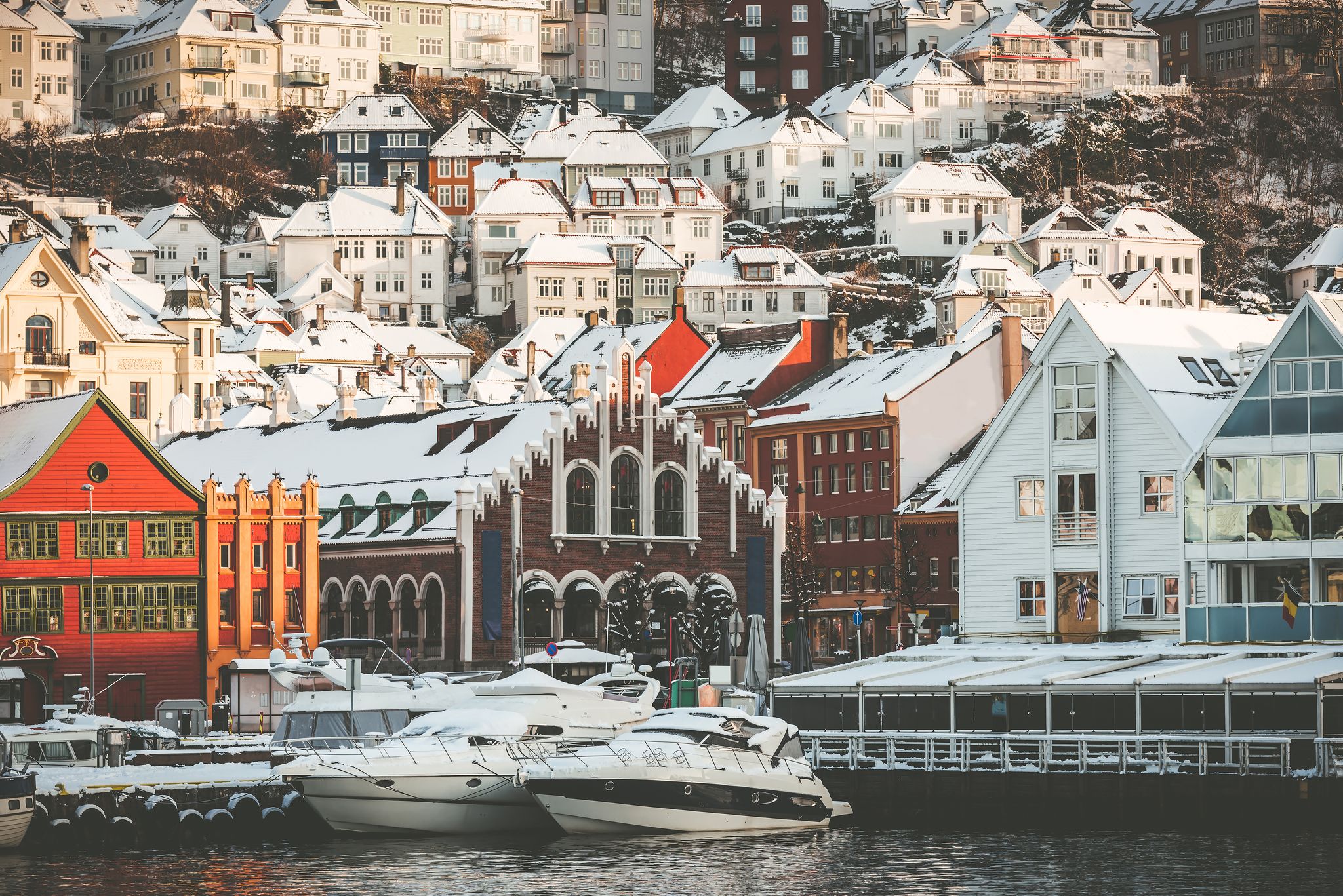
Winter in Bergen is cold and mild, usually around 32 F (0 C). The seven mountains around the city often get snow, while in the city center, it’s usually too warm for the snow to stay for long. When it does snow, it may last for a few days or sometimes a few weeks before melting. Bergen winter has only about six hours of daylight per day, but after the winter solstice in late December, the days slowly start to get longer.
However, winter is also the off-peak season in Bergen, when you can enjoy a serene travel experience. Accommodation is the cheapest and attraction lines are the shortest. Winter is the best time to go to Bergen and catch the northern lights. The longer darkness of winter gives more possibility to see this natural phenomenon.
Things To Do in Bergen During Winter
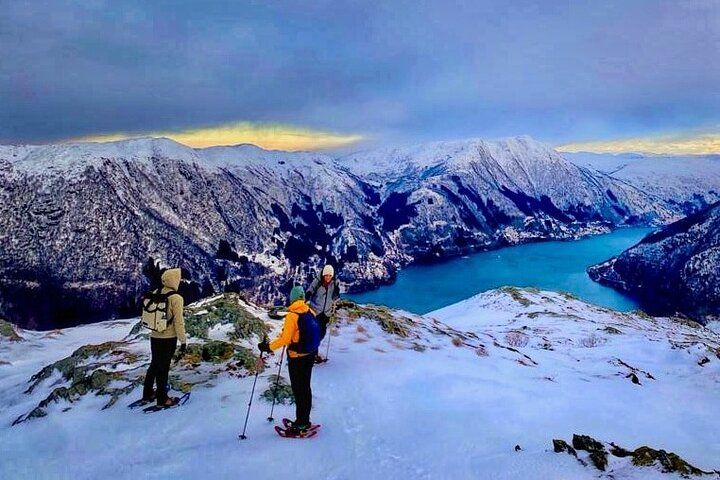
While heavy snow is rare, the city takes on a quiet charm with misty fjords, rain-soaked streets, and cozy lights glowing from the traditional wooden houses. An Ulriksbanen cable car ride offers stunning views of the surrounding mountains and fjords.
Consider a guided snowshoe hiking from Bergen to nearby unspoiled snowy terrains and walk on powdery ice. Another must-do activity in winter is joining a food and culture walk in Bergen to sample delicious dishes and regional delicacies. Don't leave without visiting the market and trying local seafood, especially fish soup. Indulge in a “skillingsbolle” or a local cinnamon roll and sample the famous Trekroneren hot dogs.
Things To Do When Visiting Bergen During Winter
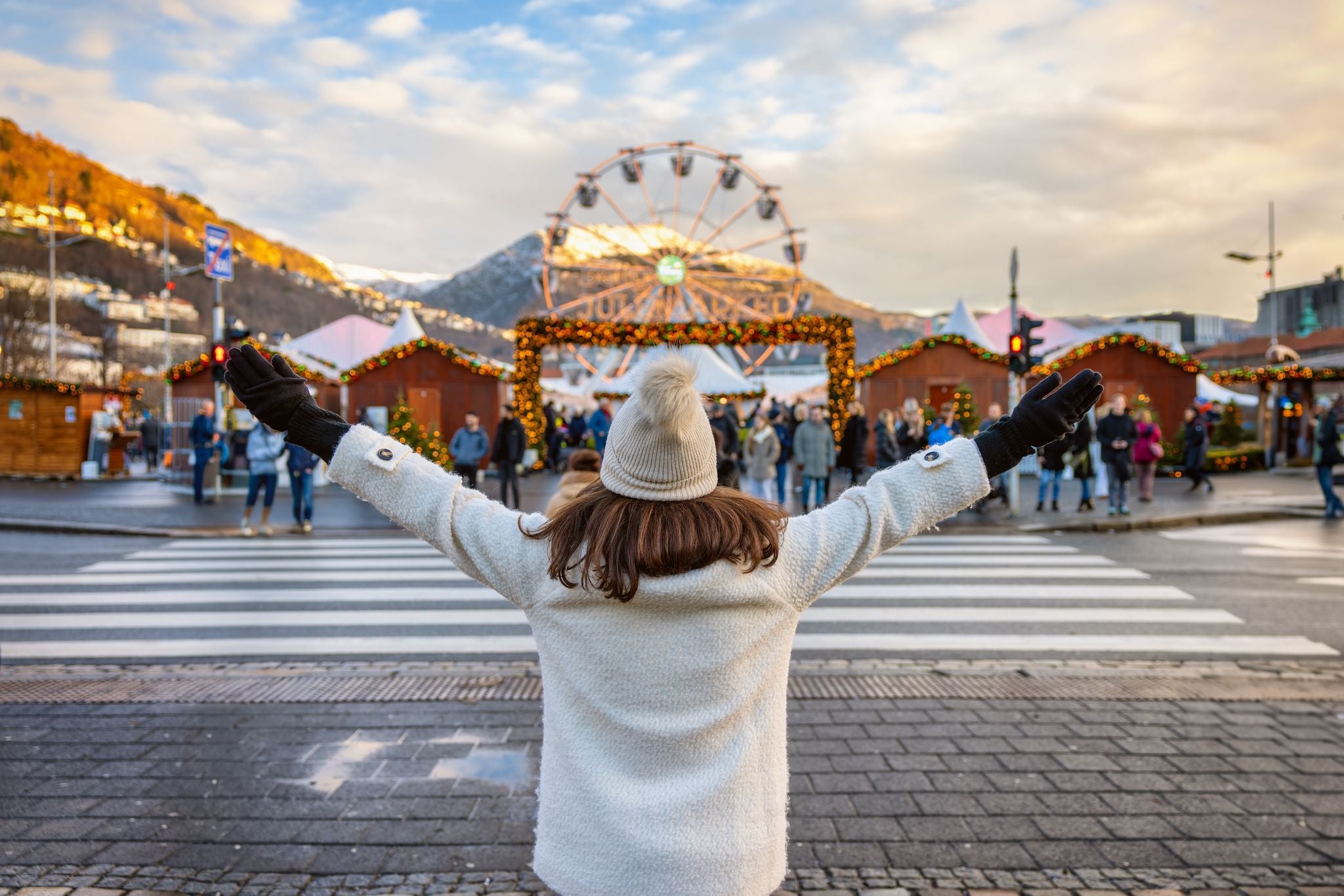
Bergen offers a few exciting winter celebrations, starting with the Bergen Christmas Market in December. This festive affair is a must-see if you're in the city. With its charming stalls and holiday atmosphere, it’s a great way to experience the magic of a European Christmas market.
In February, you can also enjoy the Bergen International Literature Festival (LitFestBergen). Held at Litteraturhuset, this festival celebrates Norwegian and international fiction and non-fiction. It’s a wonderful event for book lovers and a chance to explore the literary culture of Bergen during your winter visit.
Tips for Visiting Bergen in Winter
Winter in Bergen can be a magical experience. But to keep comfortable during winter chill, preparation is key. Here are some practical tips to help you enjoy Bergen's colder and rainier months:
- Dress for the Weather: Wear a waterproof jacket and insulated boots to overcome Bergen's frequent rain showers and occasional snow.
- Layer Up: Wear thermal leggings, sweaters, and adjustable layers to remove when indoors.
- Don't Forget Accessories: Wear a warm hat, scarf, and gloves to survive the cold wind, especially near the Bryggen harbor or during outdoor excursions.
- Pack Sturdy Footwear: Non-slip, waterproof shoes or boots are essential for walking on wet streets, slippery trails, or light snow.
- Carry a Compact Umbrella: Rain is frequent in winter, so having a portable umbrella is handy for exploring the city without getting soaked.
- Stay Visible: With limited daylight (as few as 6 hours in December), consider wearing reflective gear or a flashlight when walking in less-lit areas.
- Plan Indoor Activities: Enjoy Bergen's indoor attractions, like the Hanseatic Museum, Troldhaugen (Edvard Grieg's home), or the KODE Art Museums, to escape the cold while enjoying the city's rich culture.
- Check Weather and Transport: Weather in Bergen can change quickly, so check forecasts regularly. Snow and rain might impact transportation schedules, so plan accordingly.
Best Months To Visit Bergen, Norway
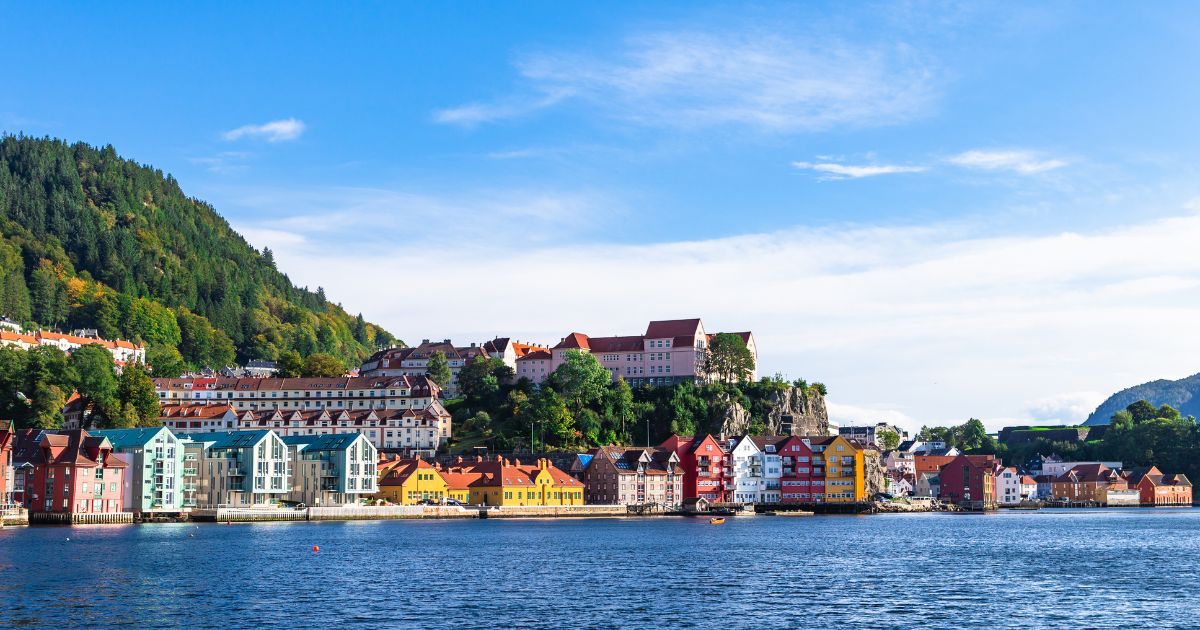
The best months to visit Bergen, Norway, depend largely on your preferences and what you want to experience. No matter when you choose to visit, Bergen's charm will leave you with unforgettable memories. Below is a monthly breakdown of the weather conditions in Bergen.
Bergen in January
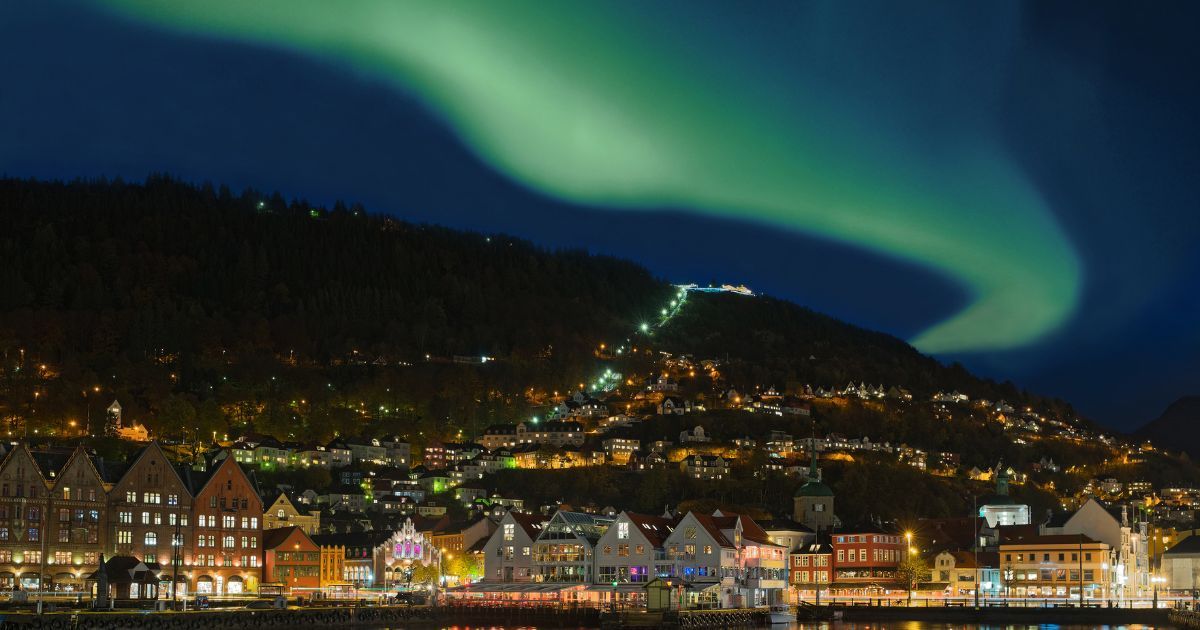
Expect cold weather when visiting Bergen in January; it is one of the coldest and wettest months. Daylight is short, lasting only 6 hours, and it may rain on nineteen days during the month.
- Average High: 37 F (3 C)
- Average Low: 32 F (0 C)
- Rainfall: 10 inches (255 millimeters) / 19 days
January is the best time to visit the Bergen indoor attractions, like the Bergen Aquarium. It is less crowded than during the peak summer season. See different marine life, including fish, penguins, and seals. You can also visit the Bergen museums, like the Hanseatic and Schotstuene, which showcase the city's maritime history.
If you visit in January, bring rain gear that can handle constant rain and waterproof footwear. Dress in warm layers to stay dry, and make sure your inner layers remain dry. If you plan to go skiing or chase the Northern Lights, make sure you pack suitable clothing for those activities.
Bergen in February
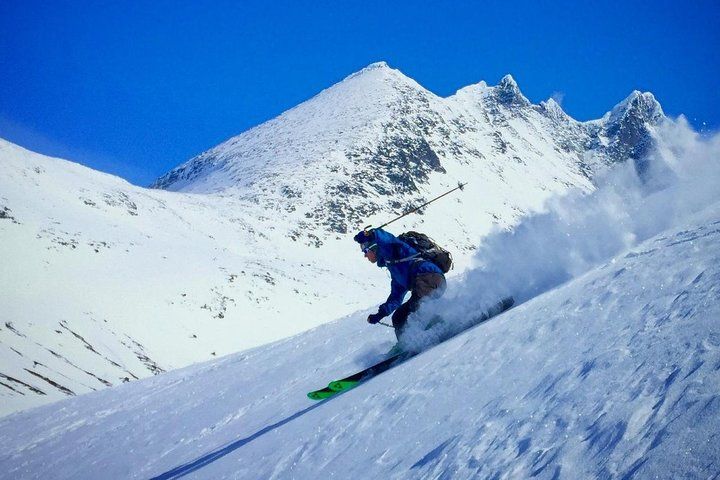
February temperatures are comparable to those in January, but daytime temperatures are generally higher and typically drop at night. Average monthly rainfall gradually decreases, totaling 17 days of precipitation. The daylight will increase from 7 hours and 56 minutes at the beginning of the month to 10 hours and 21 minutes by the end.
- Average High: 38 F (4 C)
- Average Low: 32 F (0 C)
- Rainfall: 8.3 inches (210 millimeters) / 17 days
February is the best time to visit Bergen to ski in the nearby mountains. Hotels and restaurants are also cheaper in February. Rain falls steadily for over half the month, and the wind makes the cold feel even sharper. If you plan to go outdoors, bring the right clothing.
Bergen in March
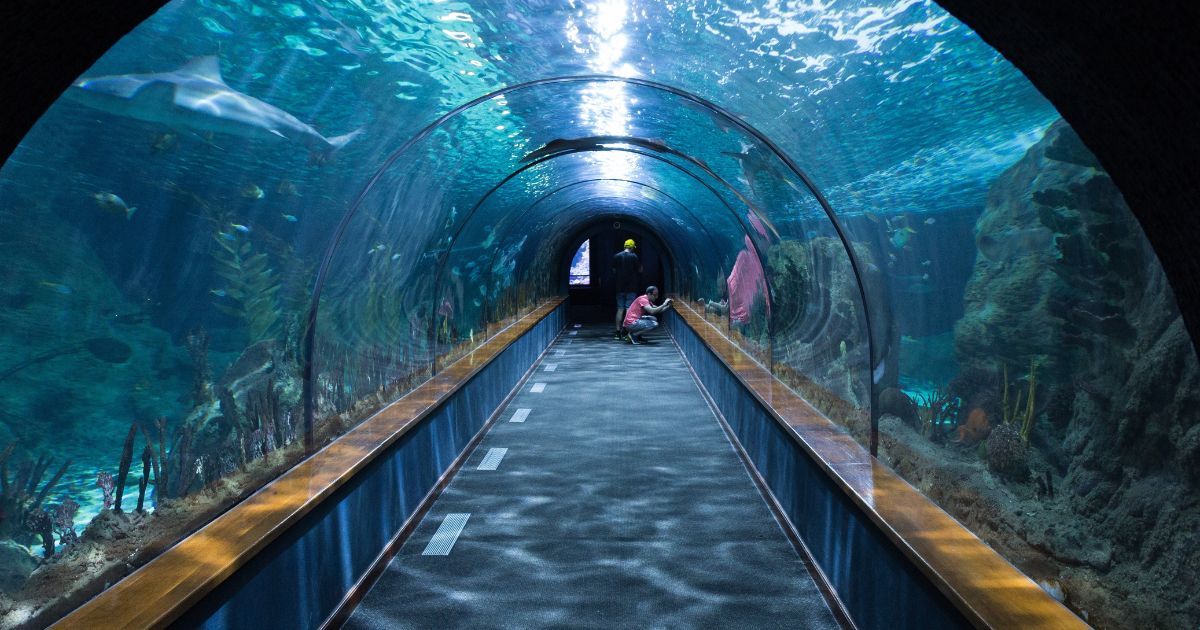
March is still relatively cold, with frequent rain at the beginning of the month. It can rain for up to 18 days, which makes it one of the wetter months. The daytime is still short, lengthening towards other months in spring.
- Average High: 41 F (5 C)
- Average Low: 34 F (1 C)
- Rain: 7.2 inches (200 millimeters) / 18 days
Snow is possible in Bergen during March, but due to mild temperatures, it melts quickly. Wet conditions are common, so if you plan outdoor activities, you must dress in layers and use waterproof gear. Sturdy footwear will keep you comfortable when exploring.
March is the best time to visit the Bergen indoor attractions, like the Bergen Aquarium. It is less crowded than during the peak summer season. See different marine life, including fish, penguins, and seals. You can also visit the Hanseatic Museum and Schotstuene, which showcase Bergen's maritime history.
Bergen in April
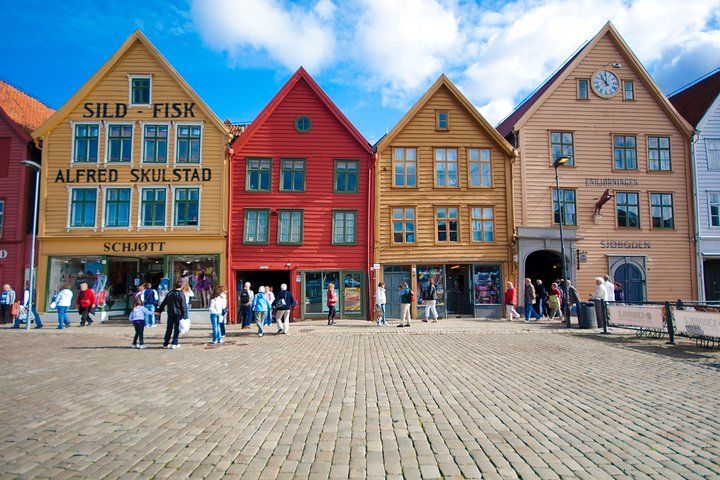
April in Bergen typically sees 14 days of rain, although the weather is milder and temperatures stay cool. The city anticipates that the average rainfall will be around 14 days. The daylight will continue to increase for up to 15 hours.
- Average High: 46 F (8 C)
- Average High: 37 F (3 C)
- Rainfall: 5.5 inches (140 millimeters ) / 14 days
With long daylight, April is the best time to visit Bergen for a walking tour. You can walk through Ovregaten's cobblestone streets, wooden houses, and views of Bryggen's lesser-seen backside. You can also visit Fantoft Stave Church and St. Mary's Church, a few of Bergen's oldest buildings, which have survived city fires.
April still feels cold, so dressing in layers and wearing heavy rain gear is essential, as it rains for over half the month. A light coat won't be enough, and you'll need sturdy footwear and an umbrella.
Bergen in May
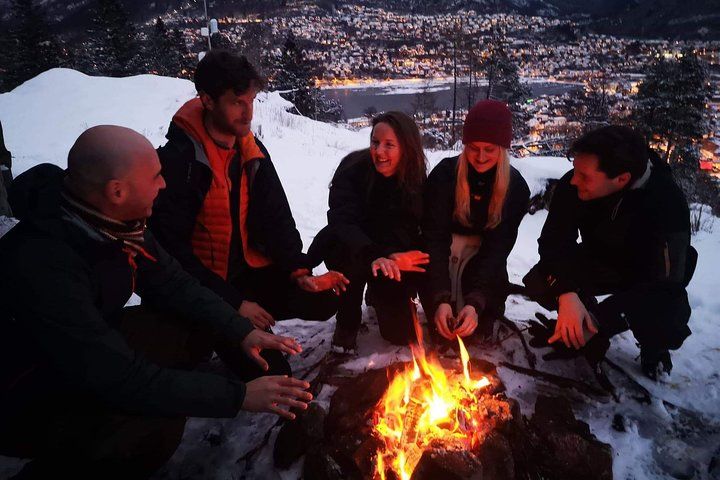
May is the driest month in Spring in Bergen, with an average rainfall of just 4.3 inches (110 millimeters) and around 13 rainy days. The spring flowers are fully grown, and the days continue to get longer, reaching 18 hours by the end of the month, giving more time to enjoy outdoor activities.
- Average High: 55 F (13 C)
- Average Low: 45 F (7 C)
- Rainfall: 4.3 inches (110 millimeters) / 13 days
May may be the month when you don't have to wear a sweater all day long; check the extended forecast for Bergen to be sure. But you should still bring appropriate rain gear for the rain. There will still be cold days and nights, so you may need to layer up. Ensure that your innermost layer remains dry for the most comfort.
May is the best month to visit Bergen for sunnier days, and trails will open as snow melts into flowing rivers. You can experience Norwegian hiking and cabin culture. Witness the stunning views of "Isdalen," the valley separating Mt. Floyen and Mt. Ulrikken. May's mild weather and vibrant scenery make it ideal for outdoor adventures.
Bergen in June
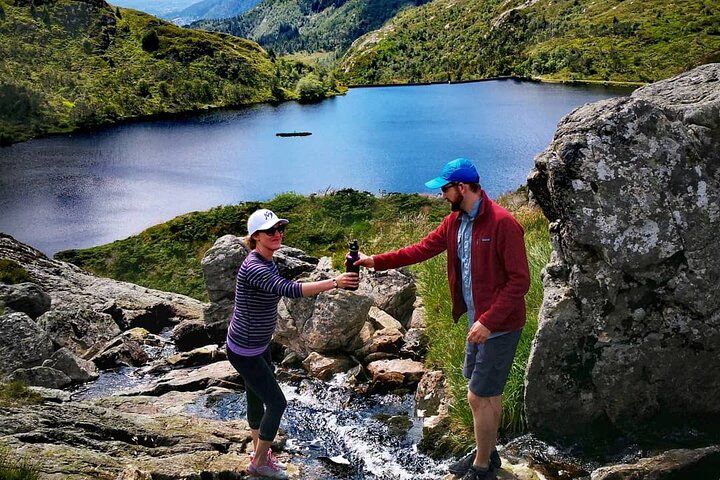
The best time to visit Bergen for a wonderful experience is June, as it enters its mild summer. The days are the longest days of the year, with up to 19 hours on the 21st of June. If you are the type of person who can’t sleep unless it’s dark, it may be a challenge for you. But the good news is that a lot of hotels have blackout curtains.
- Average High: 61 F (16 C)
- Average Low: 48 F (9 C)
- Rainfall: 5.3 inches (135 millimeters) / 13 days
Although it rains on about half the days in June, the showers are usually light and short, with plenty of sunshine in between. This weather makes it easy to enjoy the outdoors. You have plenty of time to explore Bergen's spectacular scenery and take a scenic hike to Mt. Ulriken and Mt. Floyen. You can also take a funicular through the Bergen Mountains.
Bergen in July
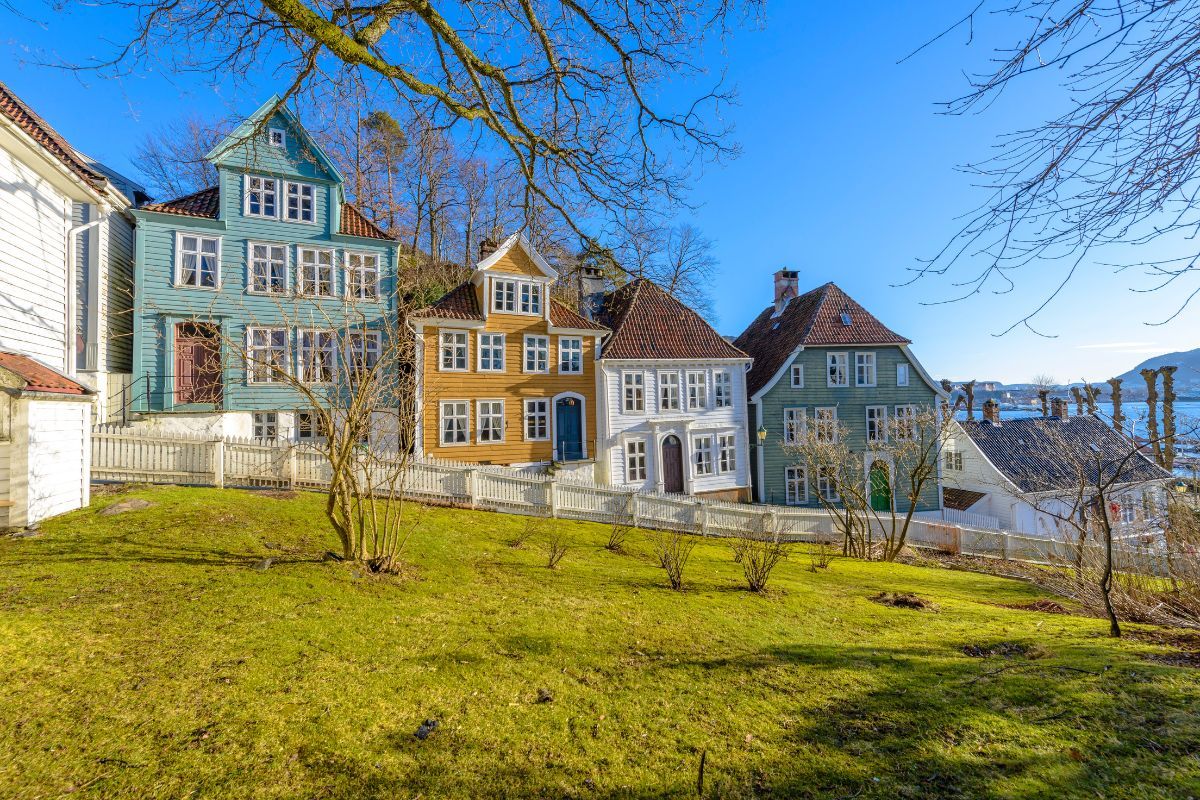
July is fantastic; it's one of the year's warmest and most lively times in Bergen. The average daylight is 18 hours, leaving plenty of time to enjoy the summer sun. July has an average of 6.29 inches (160 (millimeters) of rain. But if you pack your rain gear, you can still enjoy Bergen. Nights get cool enough for a sweater, while daytime temperatures can be warm enough for a short-sleeve shirt.
- Average High: 64 F (18 C)
- Average Low: 52 F (11 C)
- Rainfall: 6.29 inches (160 millimeters) / 15 days
In July, Bergen comes alive with summer activities that make the most of the long daylight. Visit the Old Bergen Museum to step back in time and explore reconstructed wooden houses from the 1700s and 1800s. On sunny days, stroll through its narrow streets and watch actors bring history to life. For a refreshing break, take a quick walk to the Old Bergen Sea Bath (Sandviken Sjobad).
Bergen in August
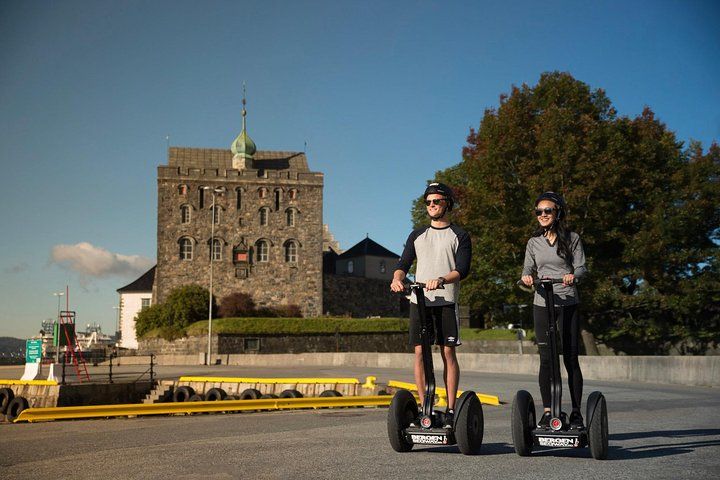
August is the tail end of summer, and the weather is mild but colder at night. The daylight hours will drop to 14 hours, a reasonable time to maximize your visit. Be prepared for heavy rains and pack suitable rain gear, including an umbrella and boots to keep your feet dry to withstand the 190 mm monthly rainfall.
- Average High: 63 F (17 C)
- Average Low: 51 F (11 C)
- Rainfall: 7.4 inches (190 millimeters) / 17 days
August is the best time to visit Bergen and explore its vibrant streets on a segway day tour. Glide through the UNESCO-listed Bryggen district, admiring its iconic wooden buildings and cobbled alleys. Stop by the lively Torget Fish Market to try local delicacies like cod tongues and caviar. It’s a fun and unique way to experience Bergen’s coastal charm.
Bergen in September
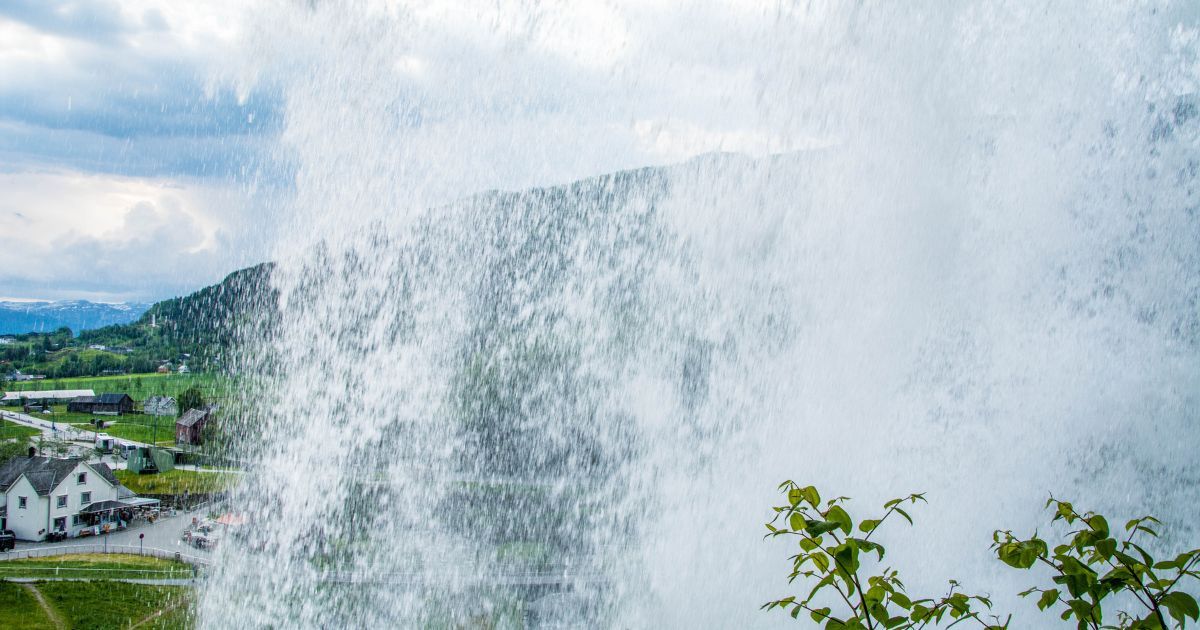
September enjoys the last bit of summer with the first signs of autumn in the air. The city, surrounded by mountains and fjords, displays fiery fall colors, making it the best time for nature and wildlife tours in Bergen. It's a very rainy month, with an average of 9.6 inches (245 millimeters) of rainfall spread over 16 days.
- Average High: 60 F (15 C)
- Average Low: 49 F (9 C)
- Rainfall: 9.6 inches (245 millimeters) / 16 days
While rain is common, it usually doesn’t last long. However, you still need to bring rain gear, including a coat, umbrella, pants, and boots. Prepare for colder temperatures and wear multiple light layers you can easily remove and put back on as the day progresses.
Bergen in October
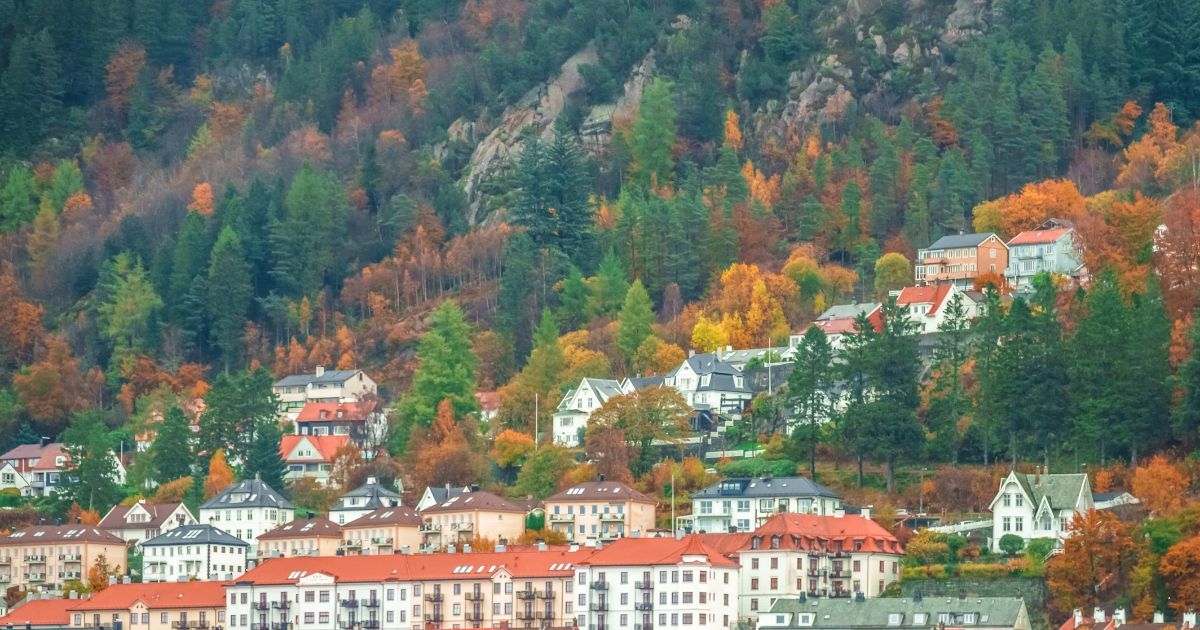
October is one of Bergen's wetter months; the city can receive around 10.6 inches (270 millimeters) of rain, so preparing for wet conditions is necessary. The rain comes in frequent showers but often comes and goes. Dressing in layers and bringing an umbrella are musts to prepare for the rain.
- Average High: 53 F (12 C)
- Average Low: 44 F (7 C)
- Rainfall: 10.6 inches (270 millimeters) / 18 days
The good thing is after the busy summer, the city becomes peaceful in October, creating a more relaxed ambiance. You'll appreciate the lovely fall colors in the nearby mountains. You can join explore Bergen on a walking tour.
Bergen in November
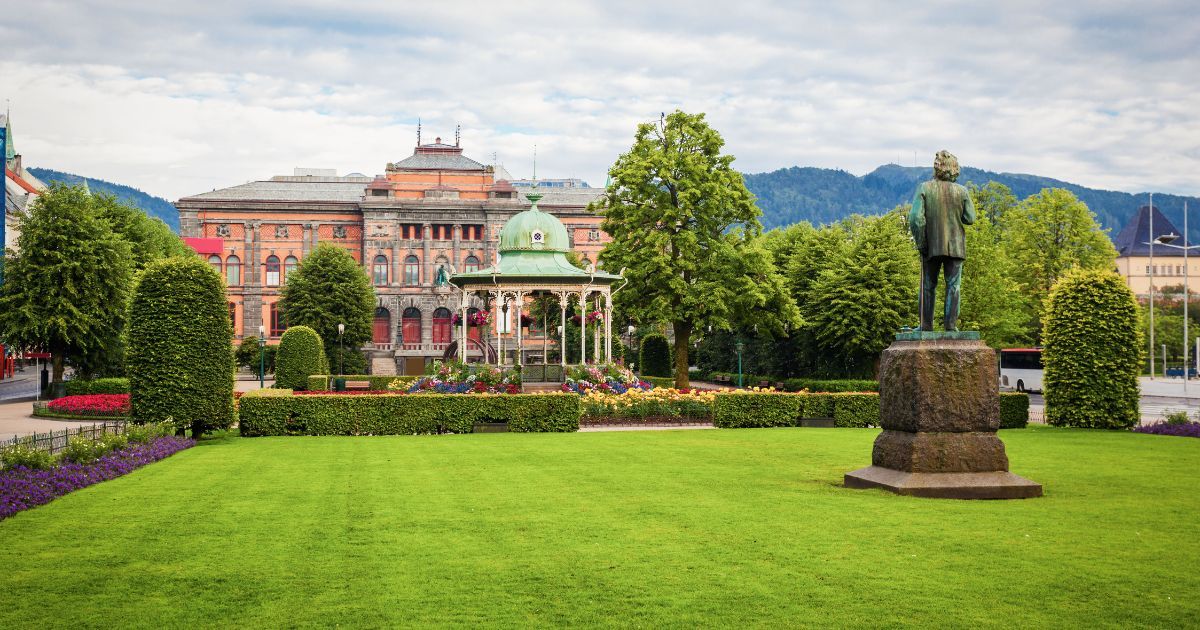
In November, Bergen experiences one of its rainiest months, with an average of 270 mm (10.6 inches) of rain spread over 18 days. The paths will be slippery, and some trails will be closed. Despite this, you can still enjoy Bergen, especially if prepared with waterproof gear and warm clothing.
- Average High: 40 F (5 C)
- Average Low: 38 F (3 C)
- Rainfall: 10.6 inches (270 millimeters) / 18 days
As an alternative, you can visit cafes and museums, such as the Troldhaugen Edvard Grieg Museum. This former home of composer Edvard Grieg comprises an exhibition center with a shop and cafe, concert hall, composers' cabin, and Grieg's villa.
Bergen in December
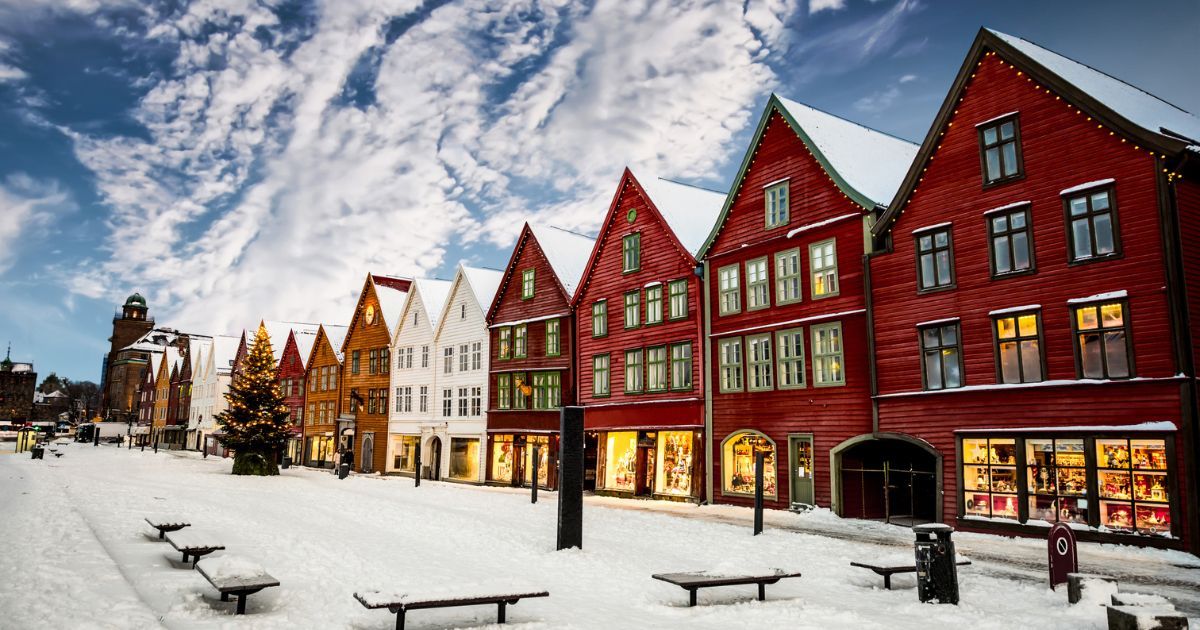
December is one of the coldest months of winter and the wettest month of the year, with 11.4 inches (290 millimeters) of rain. Bergen averages just one hour of sunshine per day in December, with the shortest day lasting 5 hours and 44 minutes on the 21st. Since it will rain nearly every day, you'll need a heavy rain jacket, pants, and boots. Wear multiple layers underneath, ensuring the innermost layer stays dry.
- Average High: 39 F (4 C)
- Average Low: 34 F (1 C)
- Rainfall: 11.4 inches (290 millimeters) / 21 days
However, if you like fewer crowds, December is the best time to visit Bergen and enjoy the holiday season with festive decorations, twinkling lights, and a Christmas market. Despite the frequent showers, the season's charm and the holiday spirit's warmth make it a memorable time to explore.
Frequently Asked Questions
When is the best time to visit Bergen for hiking?
June is the best time to visit Bergen for hiking because of the extended daylight and lesser rainfall. Many hiking trails surround the city, so Lyderhorn is recommended for a shorter hike. During summer, trails will be open from June to August, even the harder ones like Trolltunga. If you want to hike in winter, you can do it. You just need to wear shoes with microspikes because the trails are very slippery.
When is the cheapest time to visit Bergen?
The best time to visit Bergen is during the shoulder months of March and April. Late May is festival time, so book your accommodation well in advance, as it may get expensive due to the few festivals held during this time. Fall offers fewer tourists, so prices are lower. Consider the winter for the cheapest accommodation and the fewest queues at attractions.
Do I need a visa to visit Bergen, Norway?
It depends on your nationality. Travelers from the European Union/European Economic Area and several other countries have 90 days to stay without a visa. Some may need to apply for a Schengen visa. Before planning your trip, check the latest visa guidelines or your nearest Norwegian embassy.
What currency is used in Bergen?
The currency used in Norway, including Bergen, is the Norwegian Krone (NOK). Credit cards are the main form of payment and are accepted in cafes, hotels, and stores. However, carrying some cash for smaller purchases or when visiting local markets is still a good idea.
What type of power outlet is used in Bergen?
In Bergen and the rest of Norway, electrical outlets use Type F, the two-pin socket commonly known as Schuko. The standard voltage is 230V with a frequency of 50Hz. If you're traveling from a country with a different electrical system, bring a power adapter to charge your devices.
Plan Your Bergen Adventure
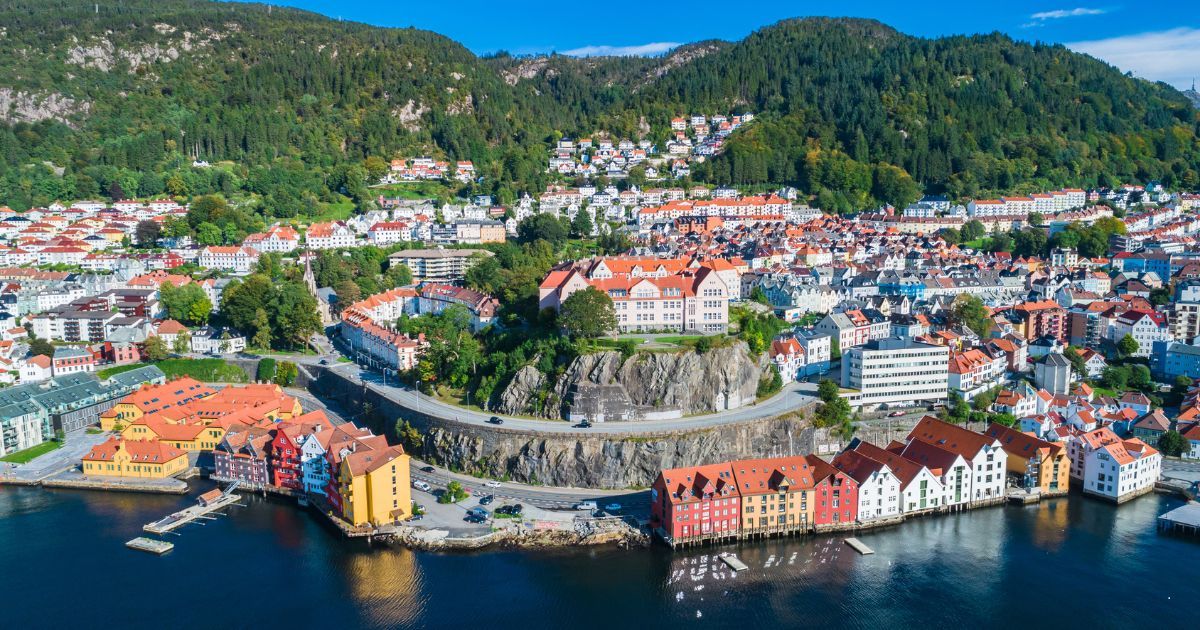
Bergen is a beautiful destination no matter when you visit, offering a range of activities and attractions year-round. Enjoy vibrant events and festivals with mild weather and extended daylight hours from June to August, though it's a busier season.
For those seeking fewer crowds, the shoulder months of May and September are ideal for exploring fjords and Bryggen Wharf. Winter in November and December brings festive Christmas markets, turning the city into a Christmas wonderland.
To make your trip hassle-free, explore places to stay in Bergen that suit your preferences, and look into flights to Bergen for convenient travel options. With many things to do in Bergen, from nature walks to cultural experiences, this city is ready to enchant you, rain or shine. Pack your bags, plan, and embark on a memorable trip to this stunning Norwegian gem!
